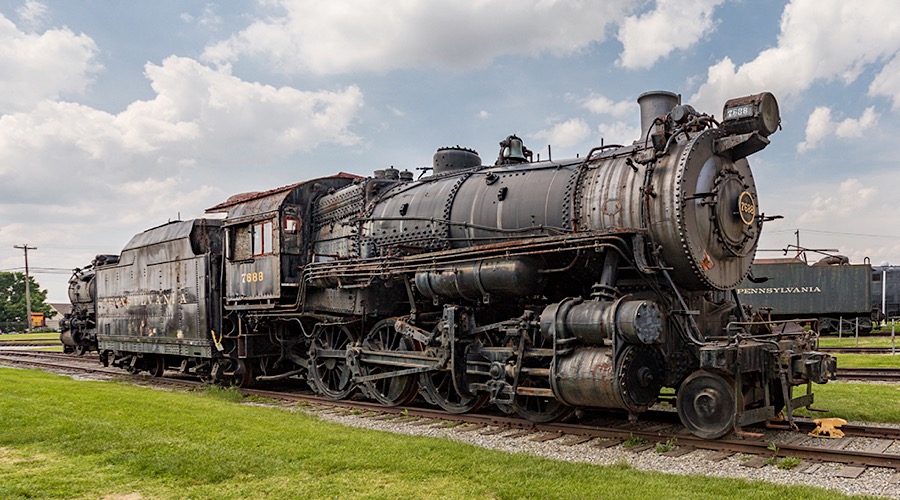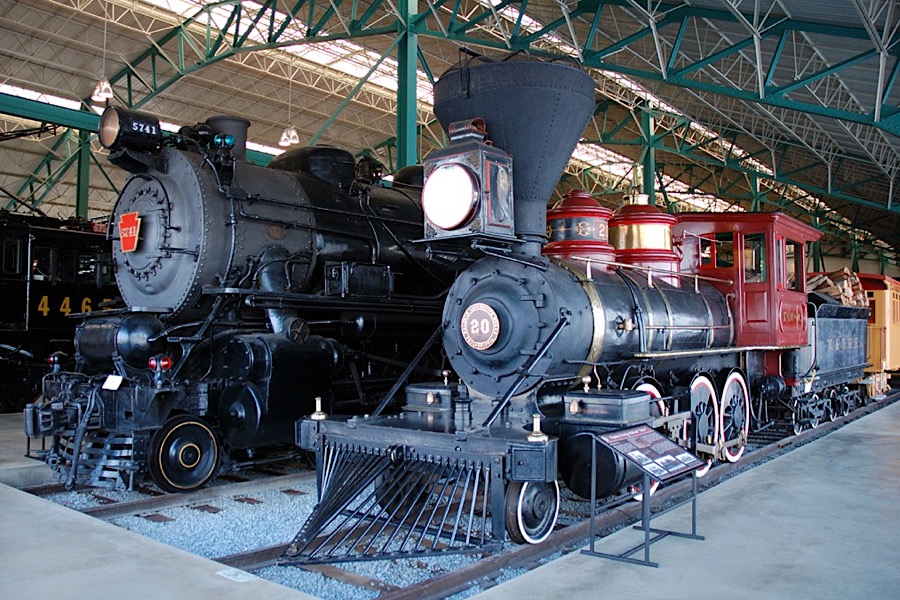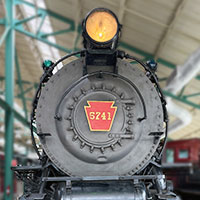 |
Railroad Museum of Pennsylvania Steam Locomotives |
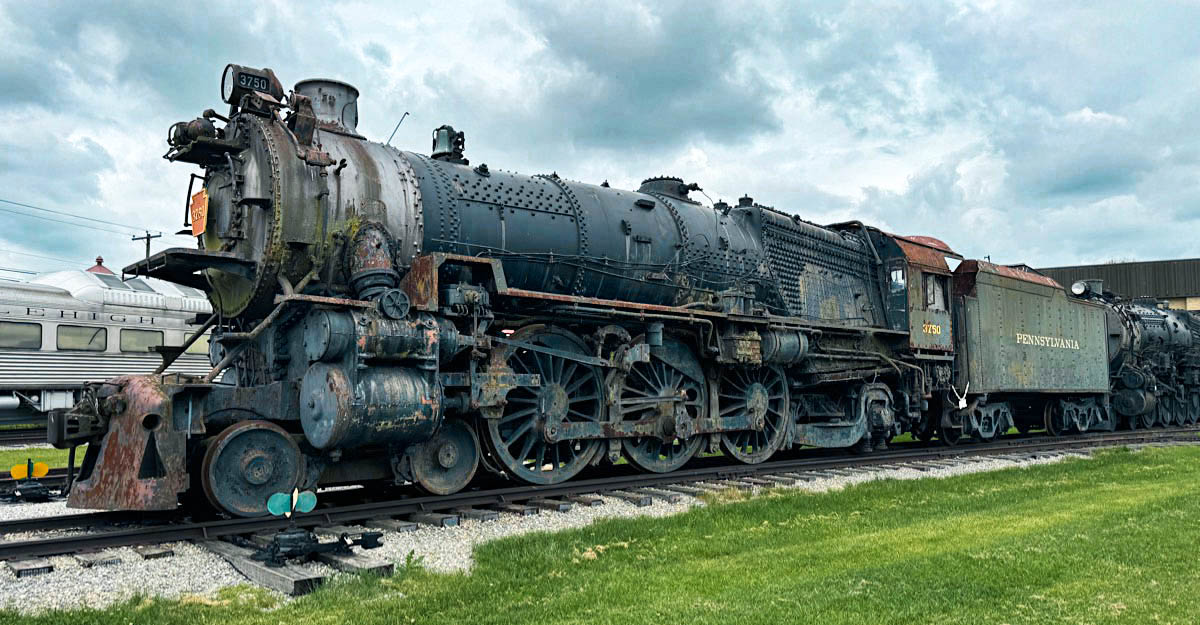
Strasburg, Pa / May 2024 / RWH

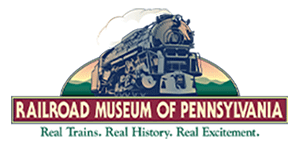
 tarting in the Museum’s early days as an endeavor by volunteers to save historic locomotives from deterioration, restoration has grown to a major program, combining a small team of employees and substantial volunteer support. Whenever possible, much of the work is performed in-house, while some tasks are outsourced.
Housed in a specially-constructed restoration shop, the Museum’s restoration program is supported by modern machine tools and support facilities. Workers bring a wide range of skills, including but not limited to metalworking, woodworking, welding, painting and electrical. Characterized as a focused but enjoyable effort, the team has successfully undertaken a series of major projects.
Emphasis is placed on restoring equipment to designated standards of appearance and material, balancing cosmetic authenticity with practicality in an era when the infrastructure that originally built this equipment no longer exists.
tarting in the Museum’s early days as an endeavor by volunteers to save historic locomotives from deterioration, restoration has grown to a major program, combining a small team of employees and substantial volunteer support. Whenever possible, much of the work is performed in-house, while some tasks are outsourced.
Housed in a specially-constructed restoration shop, the Museum’s restoration program is supported by modern machine tools and support facilities. Workers bring a wide range of skills, including but not limited to metalworking, woodworking, welding, painting and electrical. Characterized as a focused but enjoyable effort, the team has successfully undertaken a series of major projects.
Emphasis is placed on restoring equipment to designated standards of appearance and material, balancing cosmetic authenticity with practicality in an era when the infrastructure that originally built this equipment no longer exists.
HawkinsRails thanks Thomas C. Ayers for use of his RRPA.net Pennsylvania steam photos below

Pennsylvania
Pennsylvania Railroad #94

Pennsylvania Railroad #94
Strasburg, Pa / May 2024 / RWH


Pennsylvania Railroad #94
to Penn Central Transportation
to Commonwealth of Pennsylvania
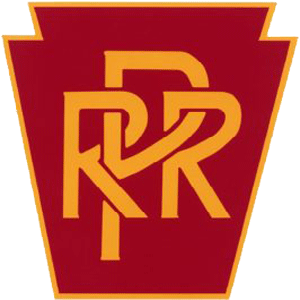
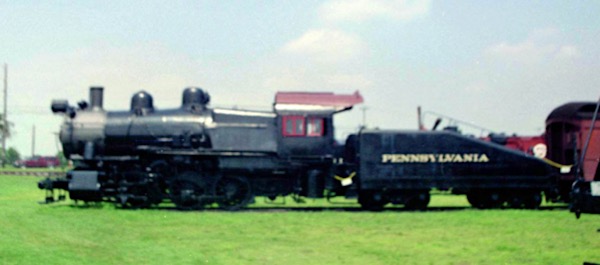
Strasburg, Pa / Aug 1994 / RWH
Pennsylvania Railroad #460

 UNCOMMON or UNUSUAL locomotive
UNCOMMON or UNUSUAL locomotive
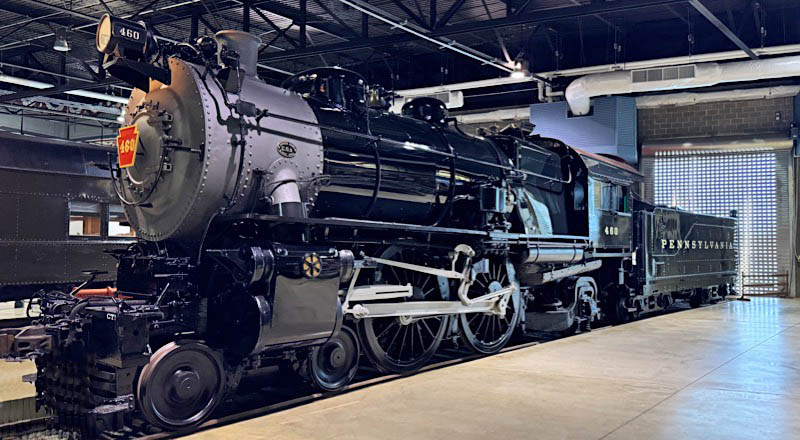
Pennsylvania Railroad #460
Strasburg, Pa / May 2024 / RWH


Pennsylvania Railroad #460
to Penn Central Transportation
to Commonwealth of Pennsylvania
dubbed the 'Lindbergh Engine'

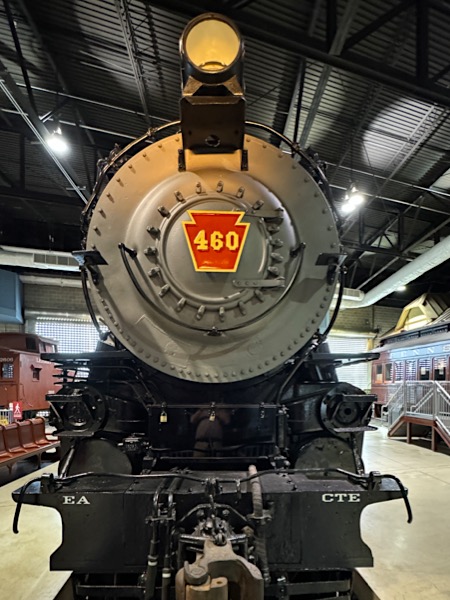
May 2024 / RWH
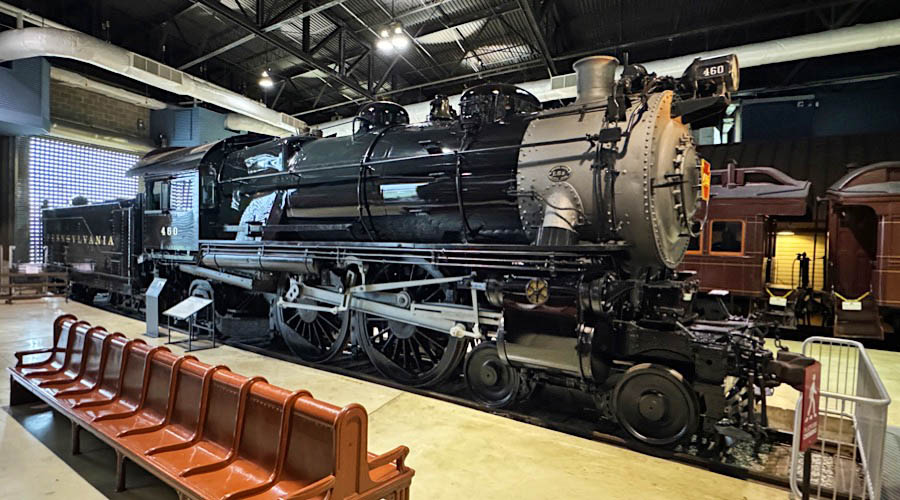
Strasburg, Pa / May 2024 / RWH

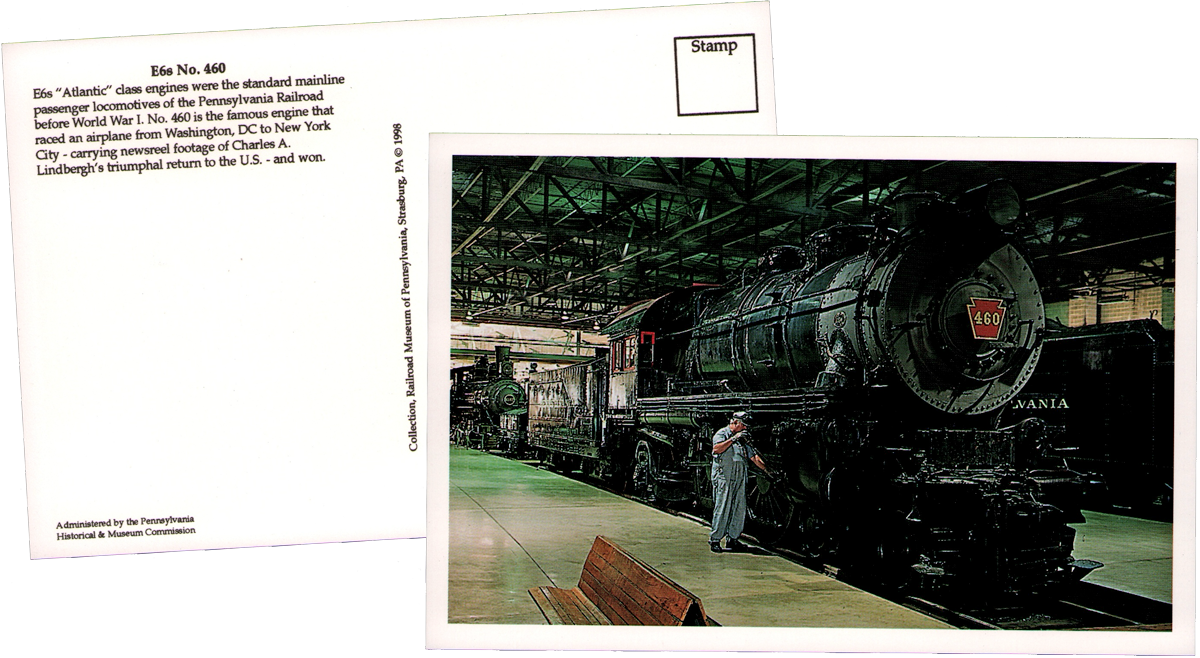
postcard / collection

collection
No. 460 was the last of the E6s model to be built, out of a total of 80 locomotives. From their construction in 1914 until 1920, the E6s ran mostly on the corridor between New York City and Washington, D.C. After being replaced by the K4s model, the E6s locomotives were relegated to charter services because of their high speed.
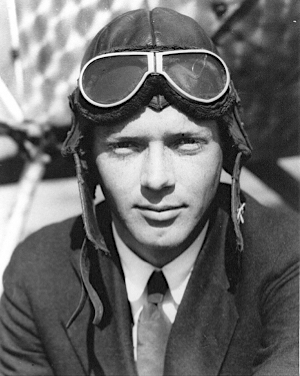 After returning from Europe and his transatlantic flight on June 11, 1927, Charles Lindbergh was promoted to Colonel and awarded the Distinguished Flying Cross by President Calvin Coolidge. Two rival newsreel companies, who were each vying to be the first to have their films of the ceremony shown in New York theaters, chartered a train and an aircraft, respectively, from Washington to New York City. No. 460 headed up the charter train, pulling only its tender, a baggage car and a passenger car. The train departed Washington at 1:14 PM and arrived at the Manhattan Transfer, outside of New York City, 2 hours and 56 minutes later. The final leg, through the tunnels underneath the Hudson River, was completed by an electric DD1. No. 460 averaged 82.7 miles per hour and is believed to had attained a maximum speed of 115 miles per hour, but there is no evidence to support the claim by the engineers. Even though the aircraft arrived in New York first, the film brought by No. 460 was in theaters hours before the other, thanks to a film processing lab on board the train's baggage car.
After returning from Europe and his transatlantic flight on June 11, 1927, Charles Lindbergh was promoted to Colonel and awarded the Distinguished Flying Cross by President Calvin Coolidge. Two rival newsreel companies, who were each vying to be the first to have their films of the ceremony shown in New York theaters, chartered a train and an aircraft, respectively, from Washington to New York City. No. 460 headed up the charter train, pulling only its tender, a baggage car and a passenger car. The train departed Washington at 1:14 PM and arrived at the Manhattan Transfer, outside of New York City, 2 hours and 56 minutes later. The final leg, through the tunnels underneath the Hudson River, was completed by an electric DD1. No. 460 averaged 82.7 miles per hour and is believed to had attained a maximum speed of 115 miles per hour, but there is no evidence to support the claim by the engineers. Even though the aircraft arrived in New York first, the film brought by No. 460 was in theaters hours before the other, thanks to a film processing lab on board the train's baggage car.
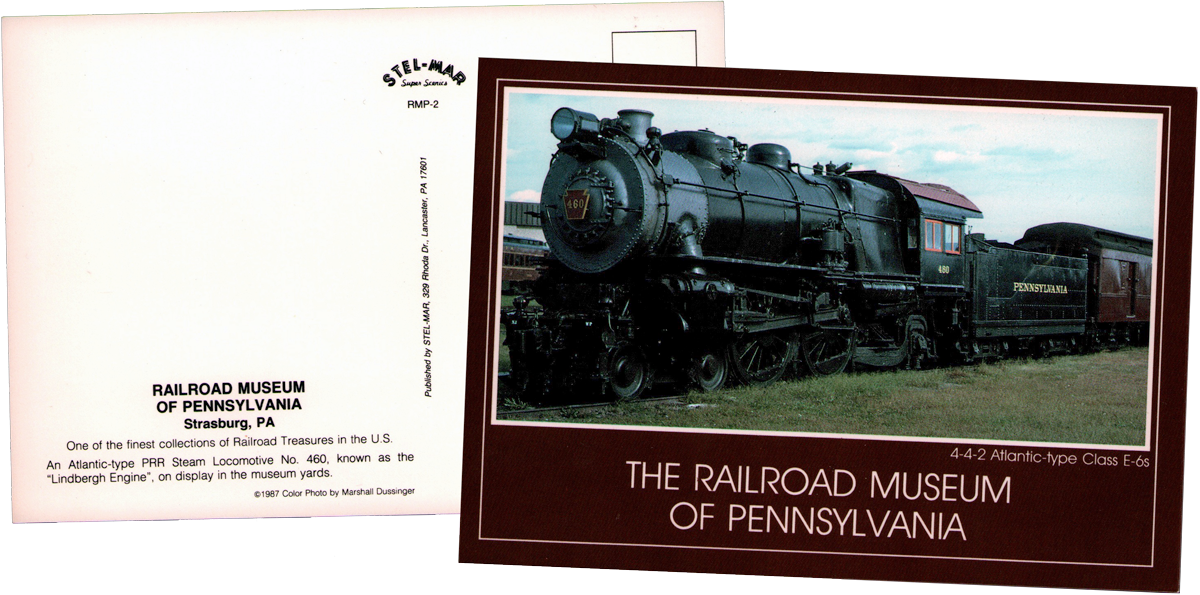
postcard / collection
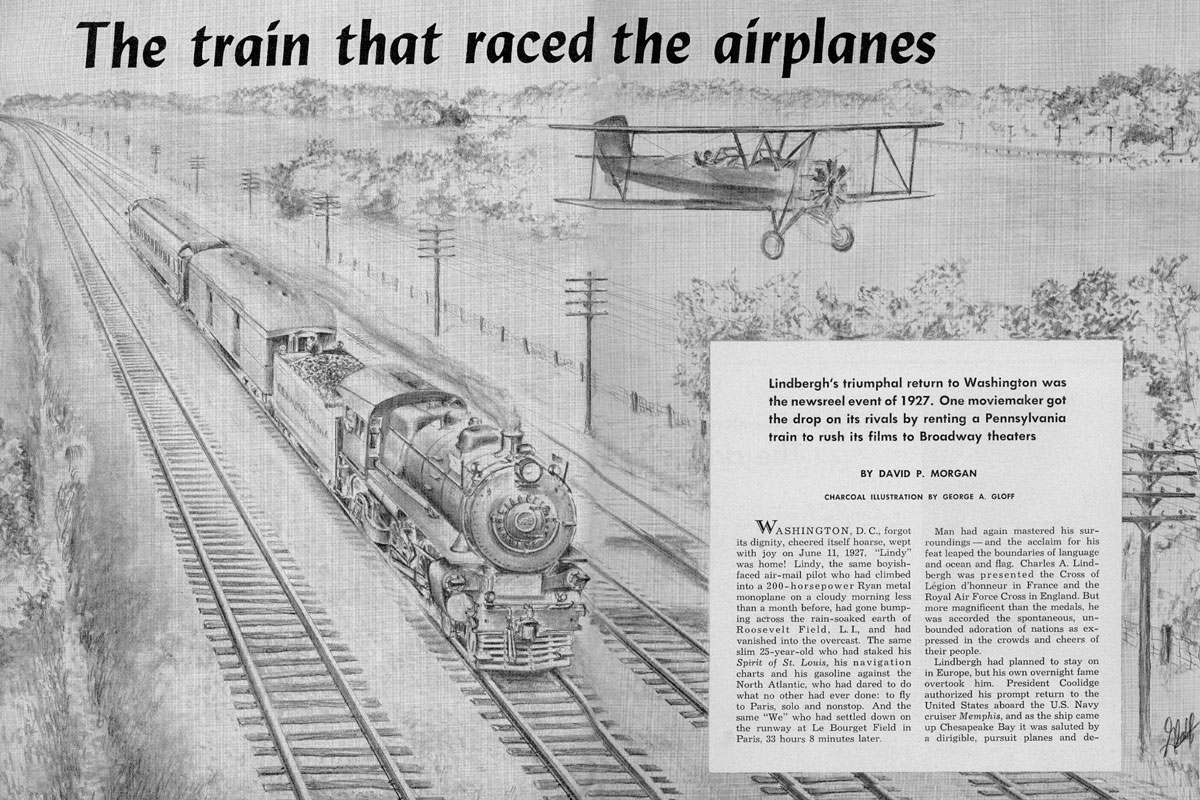
from Trains & Travel magazine - Oct 1952 / collection
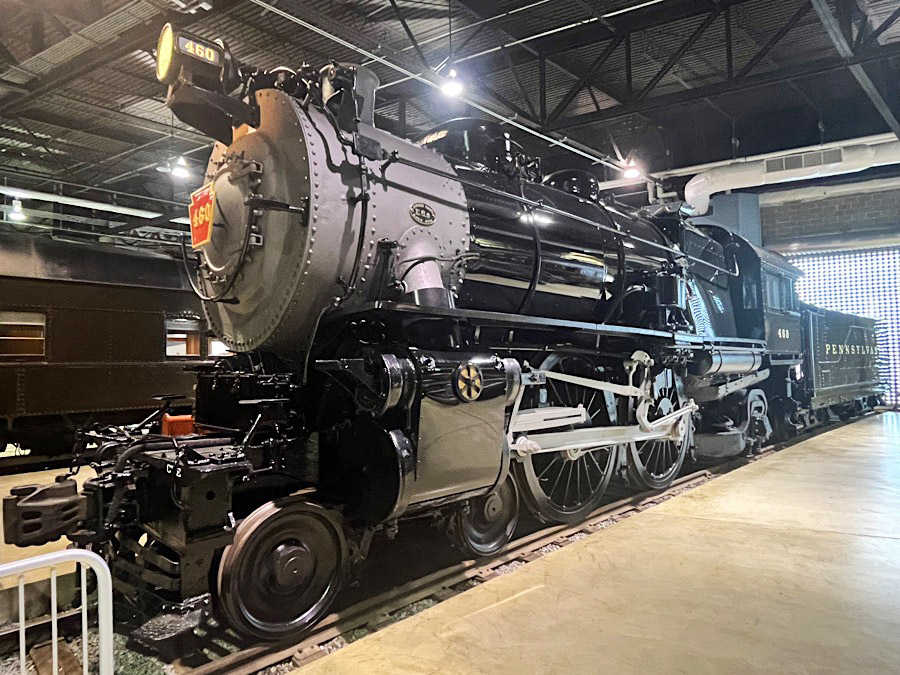
Strasburg, Pa / Jul 2024 / Gragg Robinson
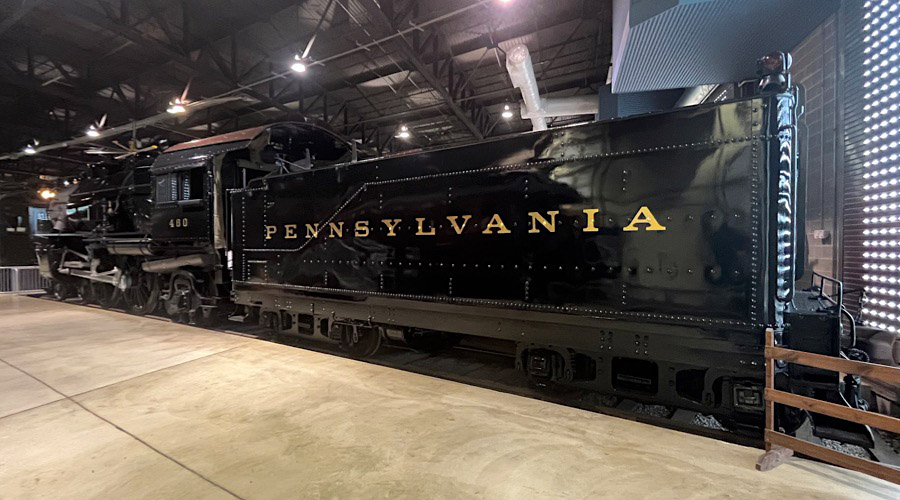
Strasburg, Pa / Jul 2024 / Gragg Robinson
Pennsylvania Railroad #520


Pennsylvania Railroad #520
to Penn Central Transportation
to Commonwealth of Pennsylvania
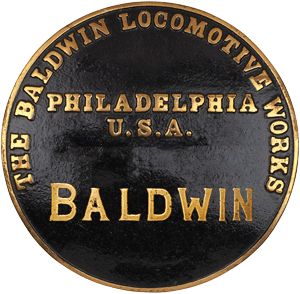
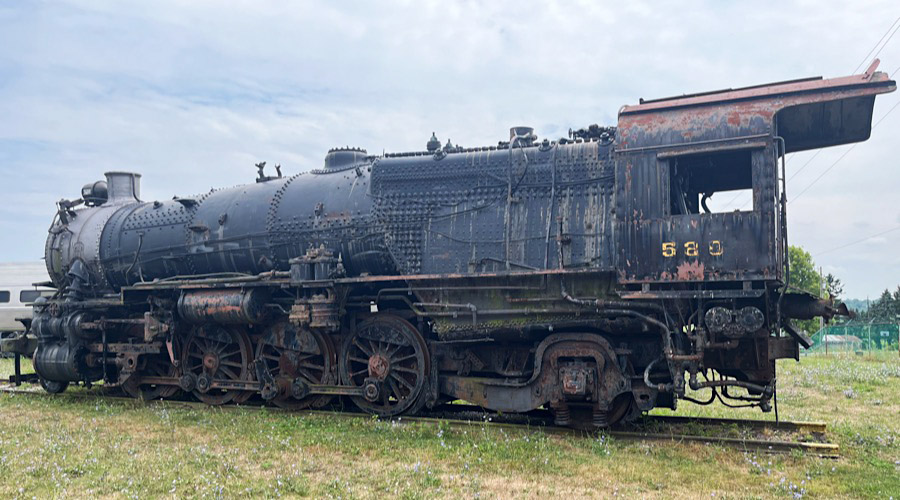
Strasburg, Pa / Jul 2024 / Gragg Robinson
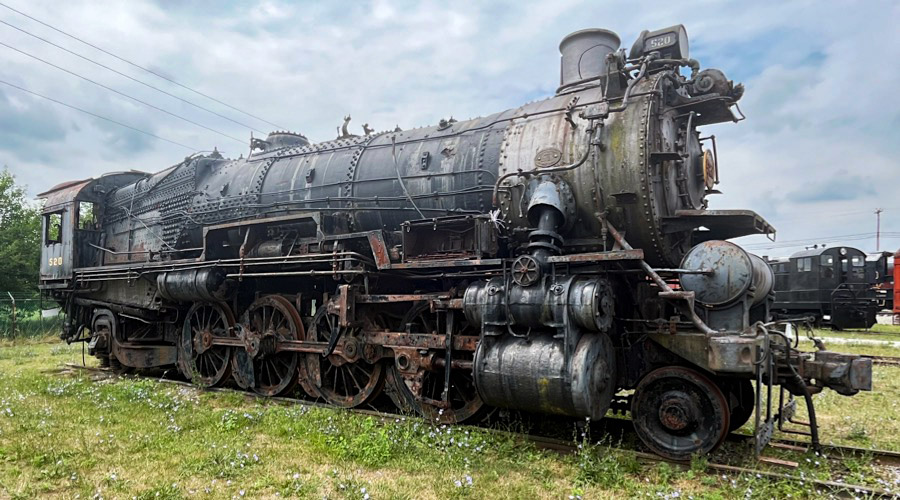
Strasburg, Pa / Jul 2024 / Gragg Robinson
Pennsylvania Railroad #1187
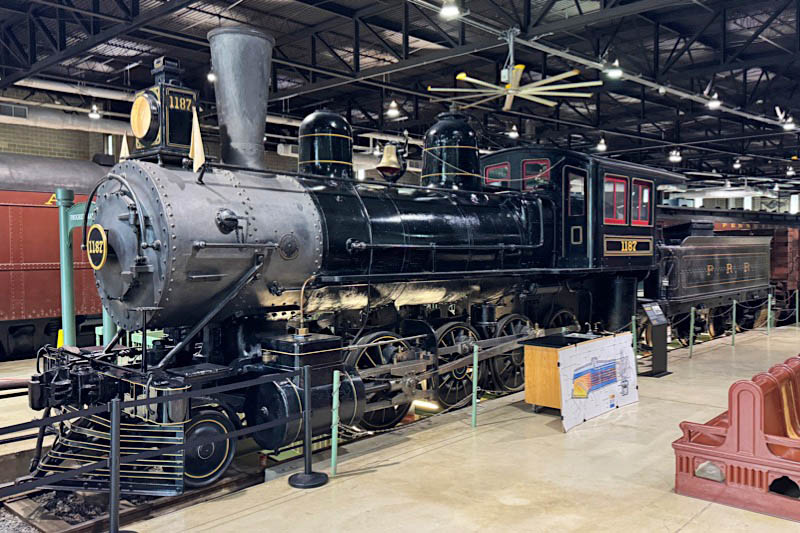
Pennsylvania Railroad #1187
Strasburg, Pa / May 2024 / RWH


Pennsylvania Railroad #1187
to John Dyer Quarry Co.
to Pennsylvania Railroad #1187
to Penn Central Transportation
to Commonwealth of Pennsylvania

Pennsylvania Railroad #1223
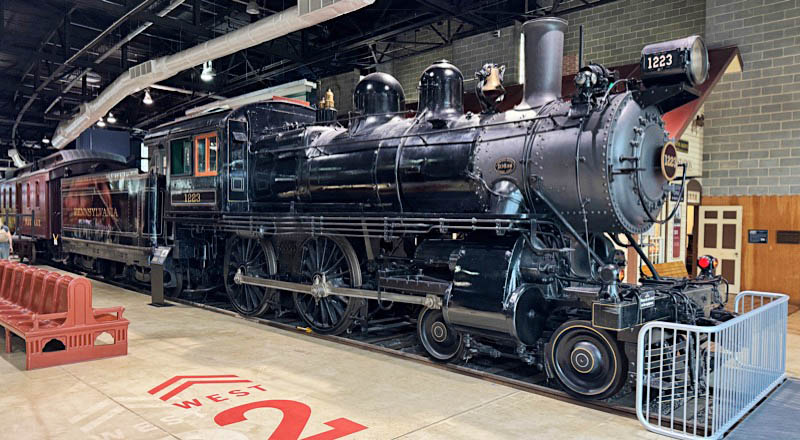
Pennsylvania Railroad #1223
Strasburg, Pa / May 2024 / RWH


Pennsylvania Railroad #1223
to Penn Central Transportation
leased to Strasburg Rail Road
to Commonwealth of Pennsylvania

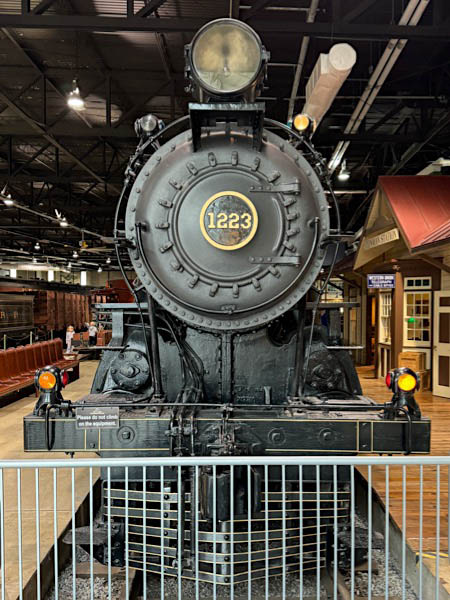
May 2024 / RWH
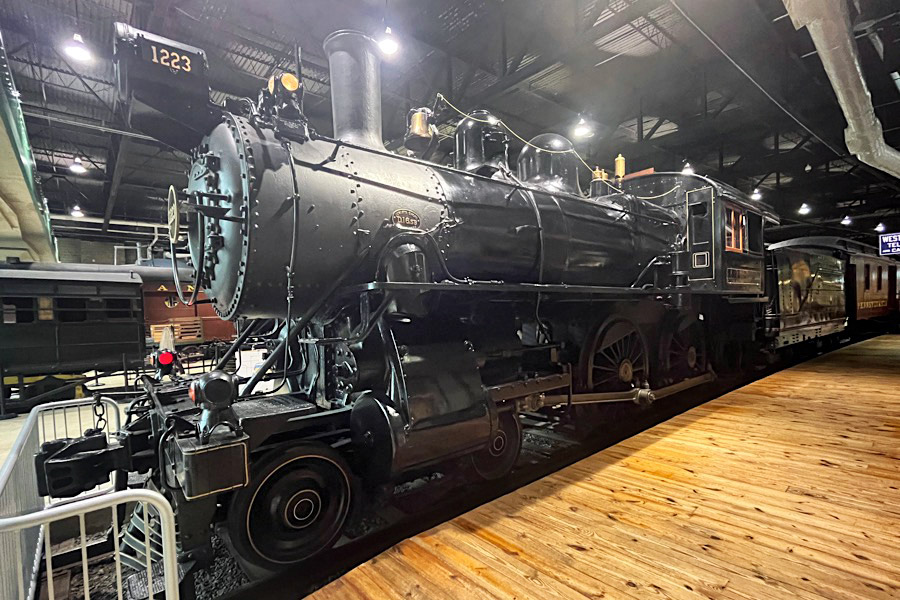
Strasburg, Pa / Jul 2024 / Gragg Robinson

Paradise, Pa / Apr 1988 / Bob Kise
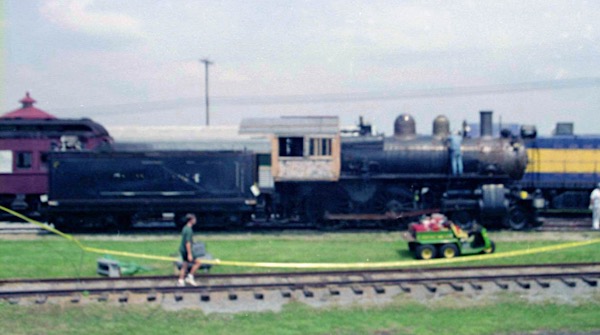
Strasburg, Pa / Aug 1994 / RWH

Strasburg, Pa / Aug 1971 / JCH

See also our complete Strasburg Rail Road Locomotives scrapbook in Preservation
Pennsylvania Railroad #2846
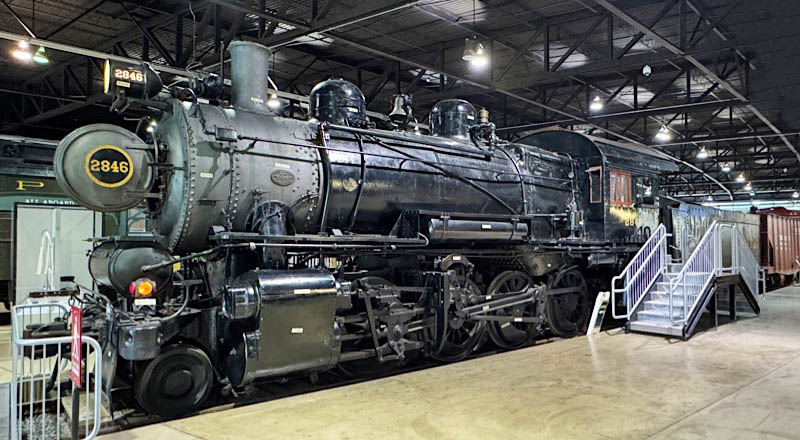
Pennsylvania Railroad #2846
Strasburg, Pa / May 2024 / RWH


Pennsylvania Railroad #2846
to Penn Central Transportation
to Commonwealth of Pennsylvania


May 2024 / RWH
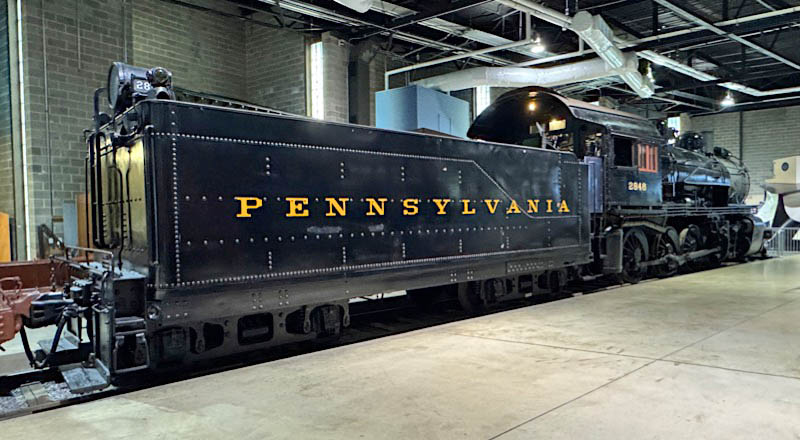
Strasburg, Pa / May 2024 / RWH
Pennsylvania Railroad #3750
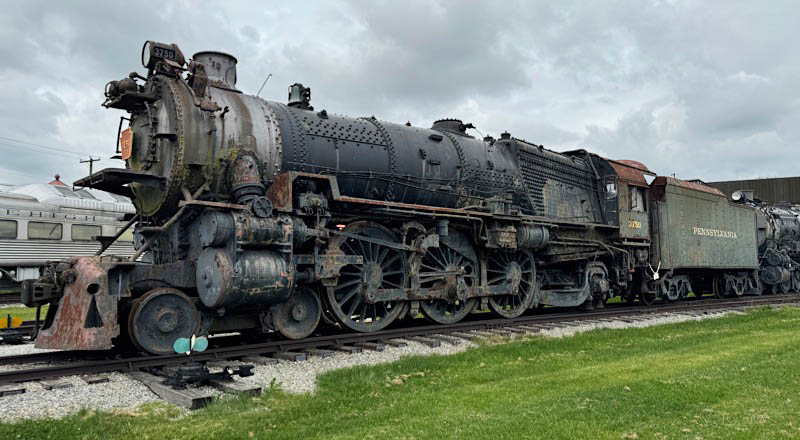
Pennsylvania Railroad #3750
Strasburg, Pa / May 2024 / RWH


Pennsylvania Railroad #3750
to Penn Central Transportation
to Commonwealth of Pennsylvania
official PA state steam locomotive

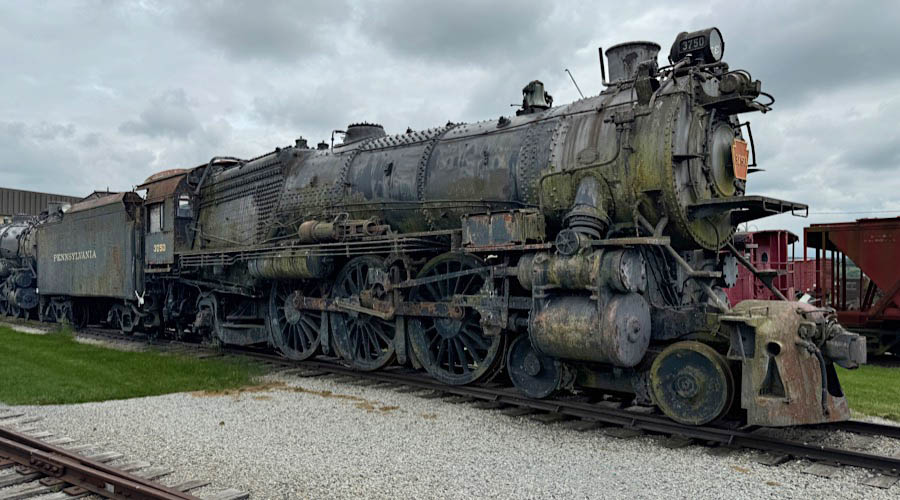
Strasburg, Pa / May 2024 / RWH
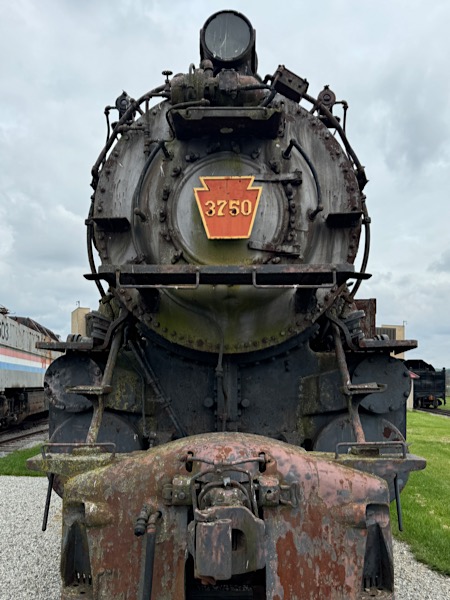
May 2024 / RWH
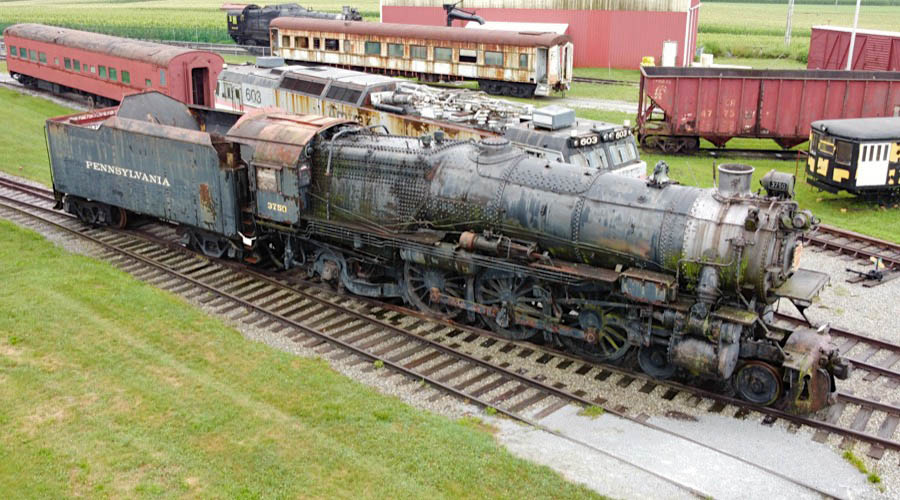
Strasburg, Pa / Jul 2020 / RWH

Jul 2024 / Gragg Robinson
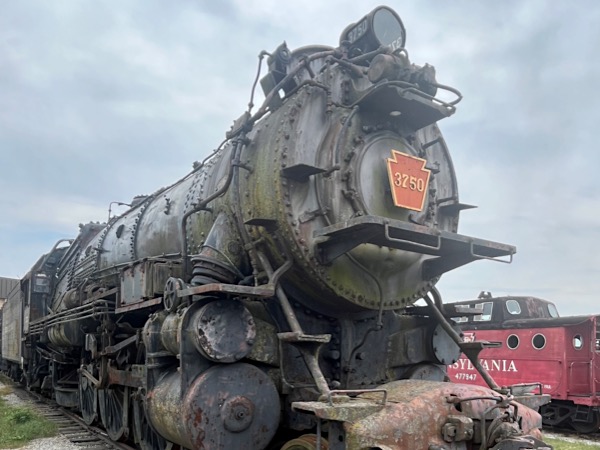
Jul 2024 / Gragg Robinson
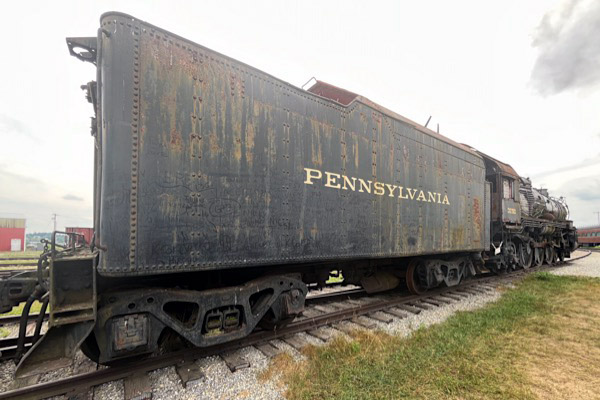
Jul 2024 / Gragg Robinson
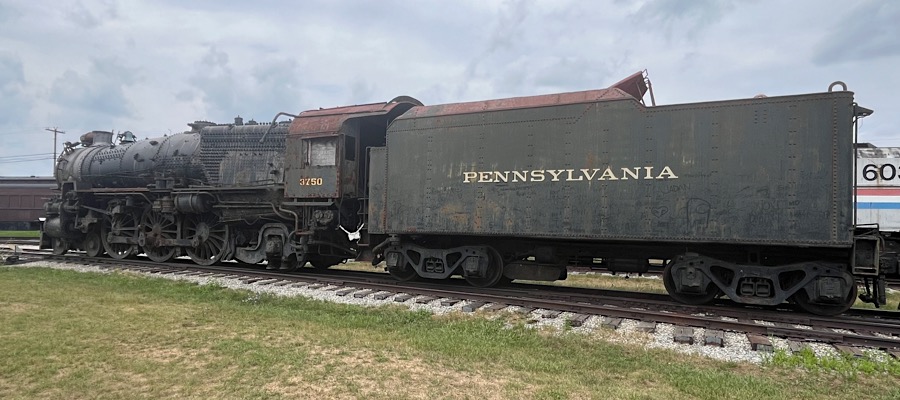
Strasburg, Pa / Jul 2024 / Gragg Robinson
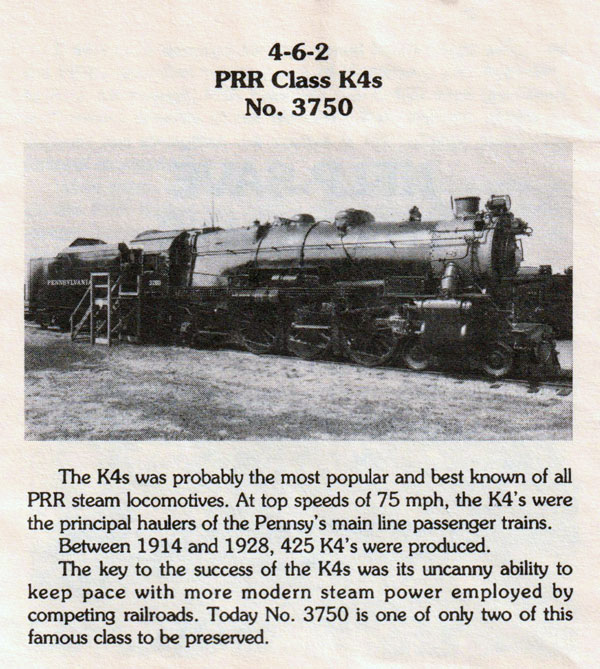
collection
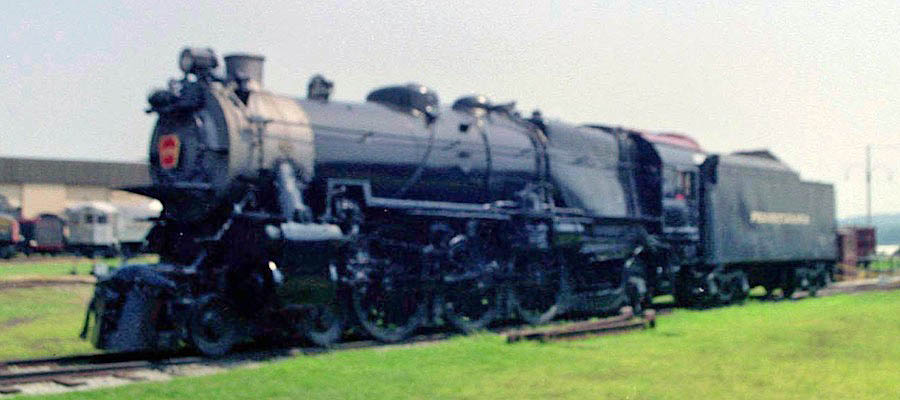
Strasburg, Pa / Aug 1994 / RWH
Pennsylvania Railroad #5741


Pennsylvania Railroad #5741
to Penn Central Transportation
to Commonwealth of Pennsylvania


May 2024 / RWH

Strasburg, Pa / May 2024 / RWH
Pennsylvania Railroad #6755
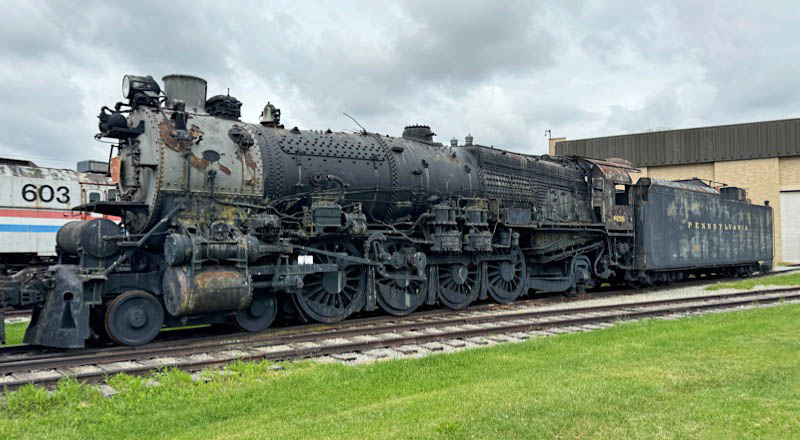
Pennsylvania Railroad #6755
Strasburg, Pa / May 2024 / RWH


Pennsylvania Railroad #6755
to Penn Central Transportation
to Commonwealth of Pennsylvania
largest surviving PRR steam locomotive

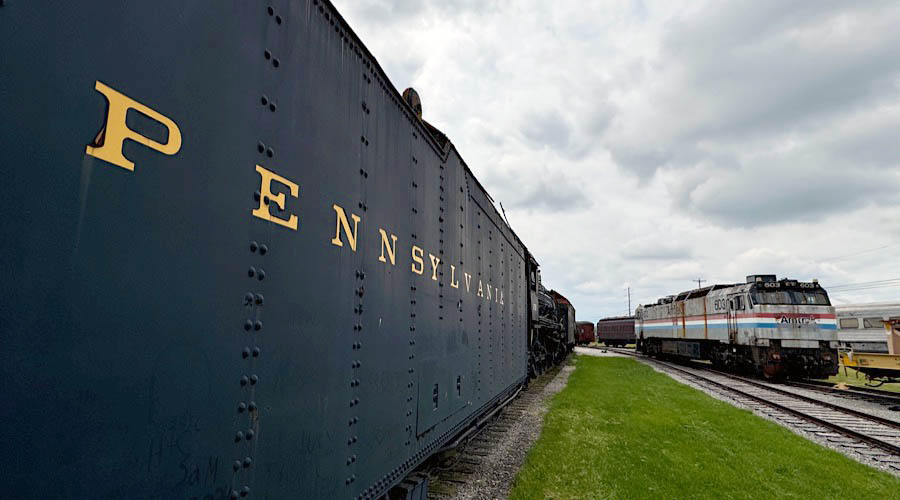
Strasburg, Pa / May 2024 / RWH
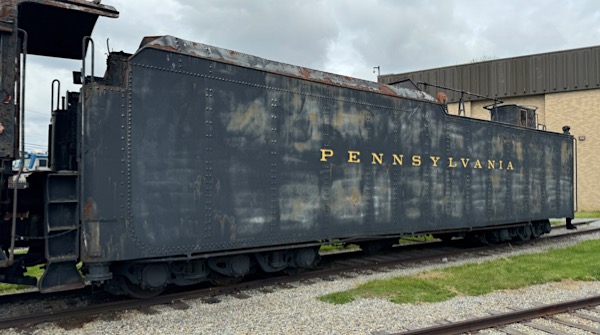
Strasburg, Pa / May 2024 / RWH
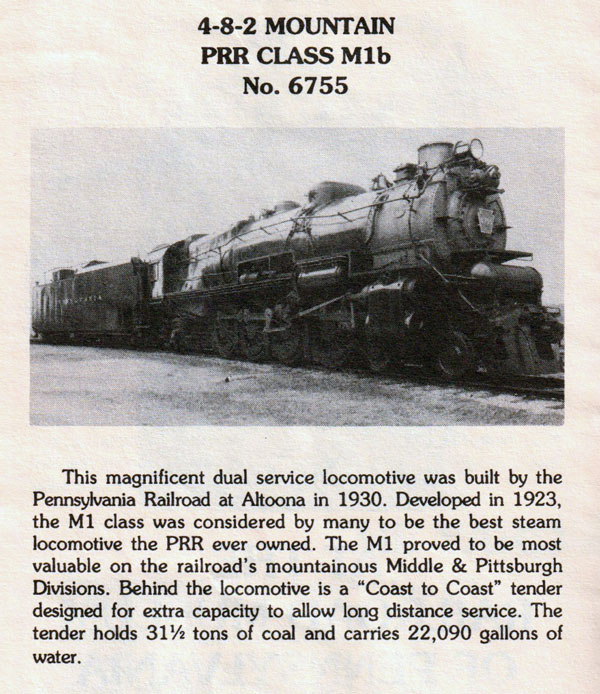
collection


Strasburg, Pa / Jul 2020 / RWH
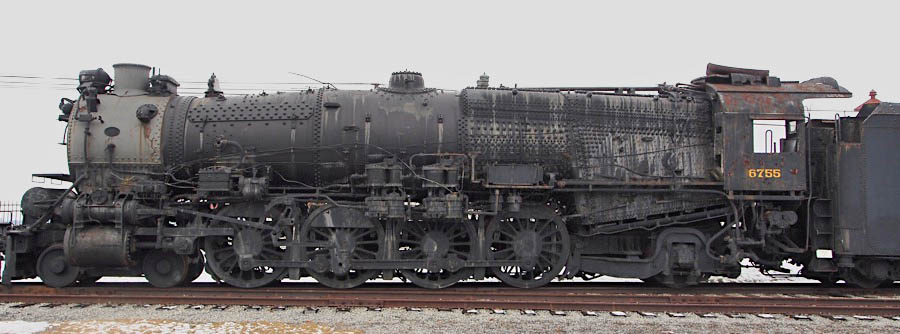
Wikipedia
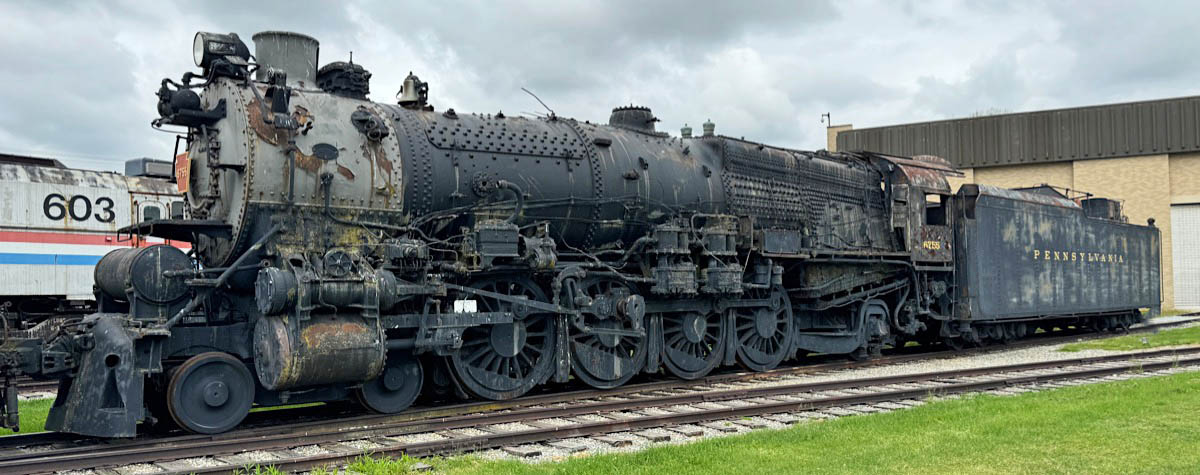
Strasburg, Pa / May 2024 / RWH
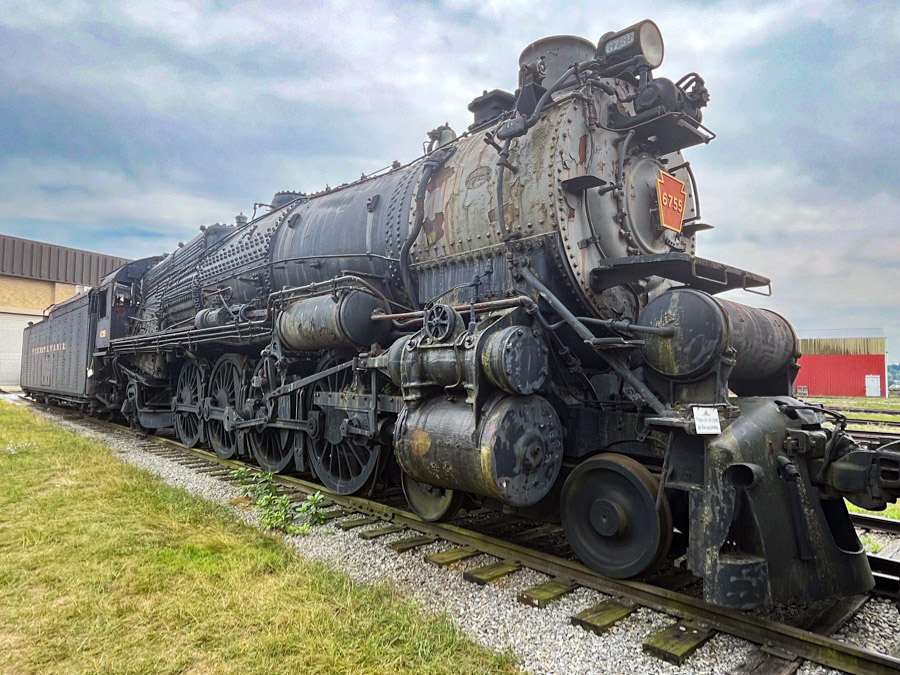
Strasburg, Pa / Jul 2024 / Gragg Robinson
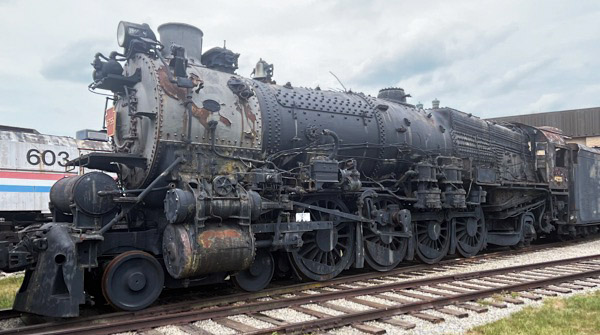
Strasburg, Pa / Jul 2024 / Gragg Robinson

Strasburg, Pa / Jul 2024 / Gragg Robinson

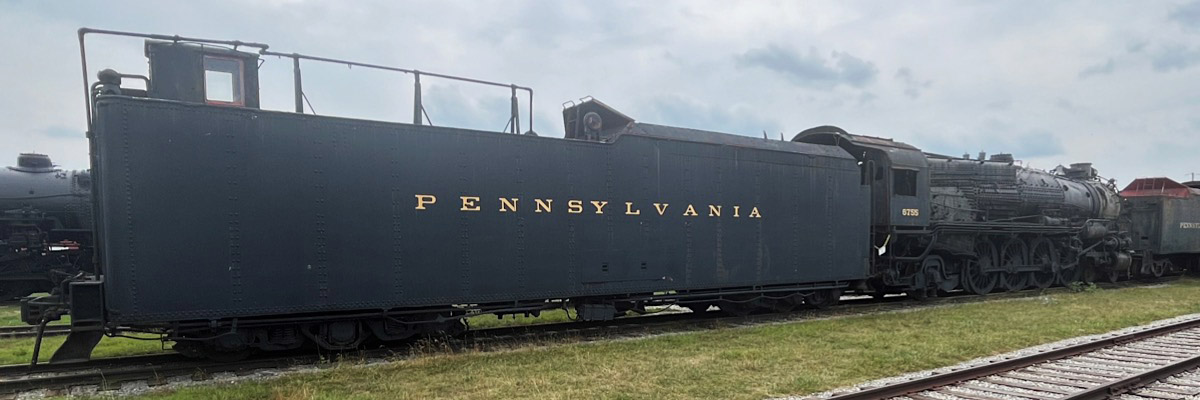
Strasburg, Pa / Jul 2024 / Gragg Robinson
Pennsylvania Railroad #7002

 UNCOMMON or UNUSUAL locomotive
UNCOMMON or UNUSUAL locomotive
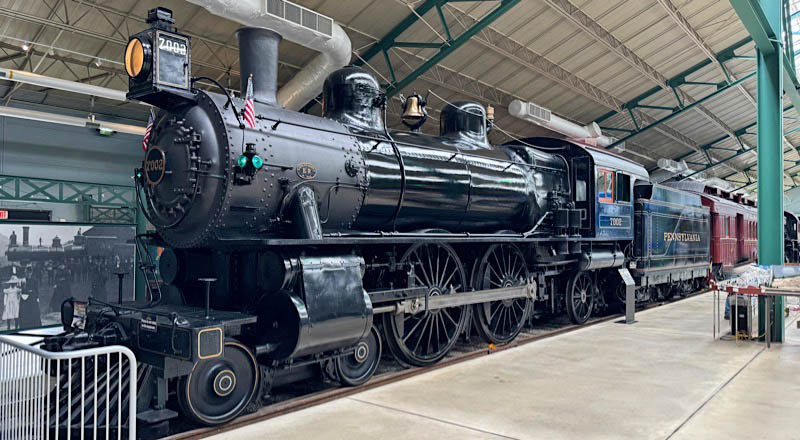
Pennsylvania Railroad #7002
Strasburg, Pa / May 2024 / RWH


Pennsylvania Railroad #7002
to Pennsylvania Railroad #7002
to Penn Central Transportation
to Commonwealth of Pennsylvania
leased to Strasburg Rail Road

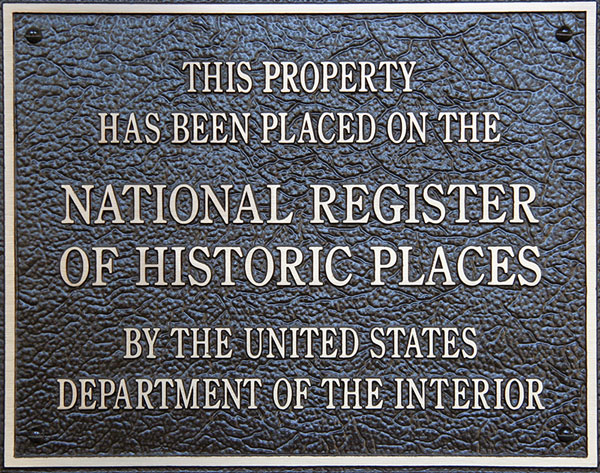 Pennsylvania Railroad 7002 is a class "E7s" 4-4-2 "Atlantic" type steam locomotive built for the Pennsylvania Railroad by their own Altoona Works in August 1902. Today, it is on display at the Railroad Museum of Pennsylvania outside of Strasburg, Pennsylvania in the United States. Originally No. 8063, the PRR renumbered it to No. 7002 after the original, claimed to be a land-speed-record-setter, was scrapped. It is the only survivor of its class and was listed on the National Register of Historic Places in 1979.
Pennsylvania Railroad 7002 is a class "E7s" 4-4-2 "Atlantic" type steam locomotive built for the Pennsylvania Railroad by their own Altoona Works in August 1902. Today, it is on display at the Railroad Museum of Pennsylvania outside of Strasburg, Pennsylvania in the United States. Originally No. 8063, the PRR renumbered it to No. 7002 after the original, claimed to be a land-speed-record-setter, was scrapped. It is the only survivor of its class and was listed on the National Register of Historic Places in 1979.
The E7s-class was created by replacing the slide valves above the cylinders on the E2a, E2b and E2c-classes with piston valves. Unlike the E2, the E2a, b, c and subsequent E7s class used Belpaire firebox instead of a "radial stay" firebox. The original No. 7002 was an E2-class locomotive built in August 1902 by the Pennsylvania Railroad's Altoona Works in Altoona, Pennsylvania. On June 15, 1902, the Pennsylvania Railroad inaugurated its new 18-hour train service from New York City to Chicago, the Pennsylvania Special-forerunner to the famed Broadway Limited. 7002 was coupled to the train as the replacement locomotive in Crestline, Ohio. Delays east of Mansfield caused it to depart Crestline 25 minutes late.
No. 7002 was claimed to have achieved 127.1 miles per hour near Elida but this speed was based solely on two passing times recorded by separate observers at two different points (AY Tower and Elida) just 3 miles apart, and it is difficult to obtain even a general indication of a train's speed from signal box registers (Speed on the East Coast Main Line p 69, by P Semmens). The train arrived on time in Fort Wayne, Indiana. It was scrapped in 1935. No. 8063 was an E2a-class also built in 1902 by the Altoona Works. It was upgraded to the E7s-class in 1916, the engine was retired in 1939.
No. 8063 was renumbered, altered to resemble No. 7002 and placed on exhibit as the "world's fastest steam engine" at the 1939 New York World's Fair and the Chicago Railroad Fair in 1948–49.
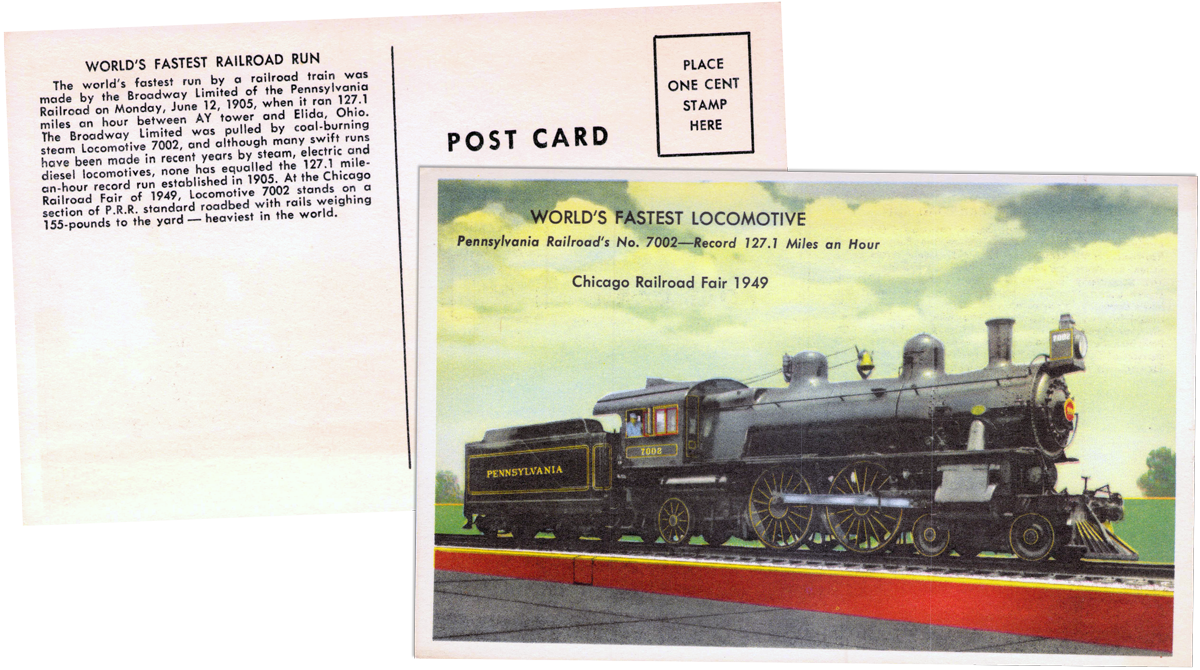
postcard / collection
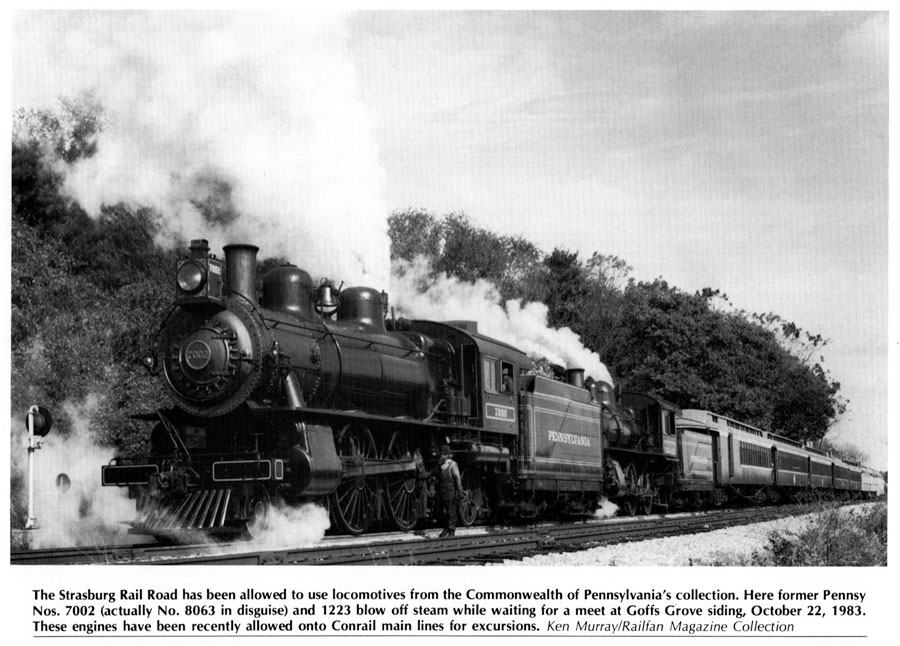
from The Steam Locomotive Directory of North America - J. David Conrad / collection
Pennsylvania Railroad #7688
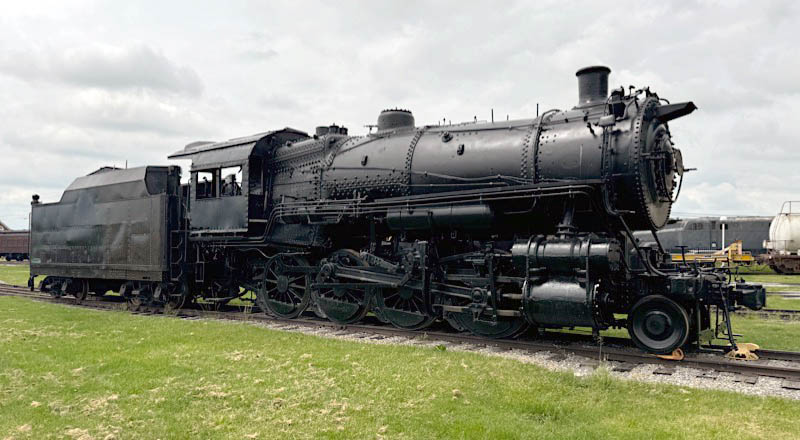
Pennsylvania Railroad #7688
Strasburg, Pa / May 2024 / RWH


Pennsylvania Railroad #7688
to Penn Central Transportation
to Commonwealth of Pennsylvania
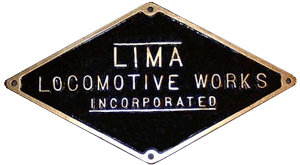
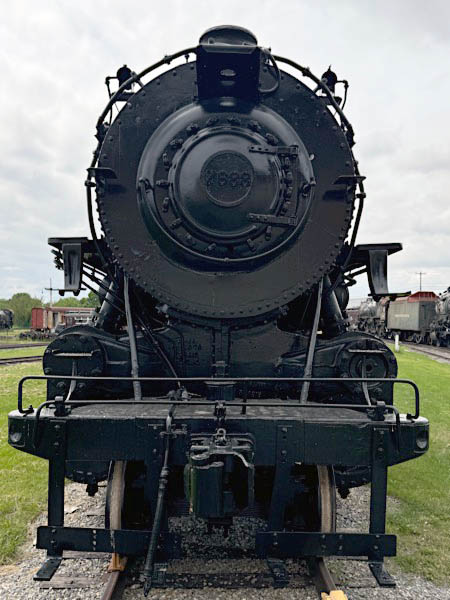
May 2024 / RWH
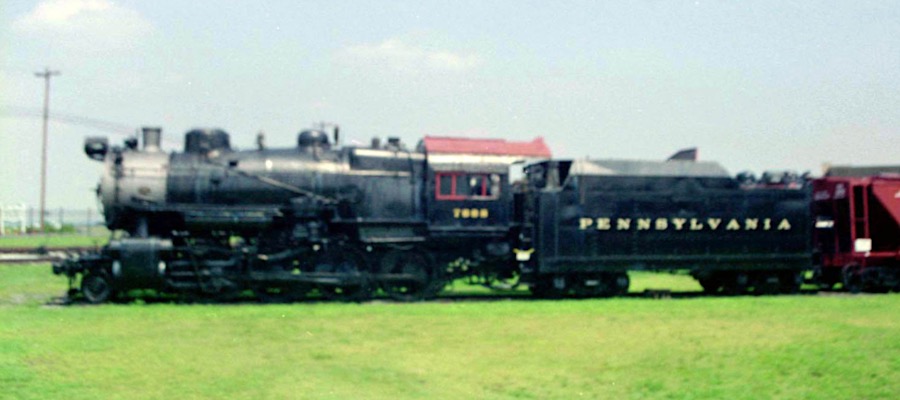
Strasburg, Pa / Aug 1994 / RWH
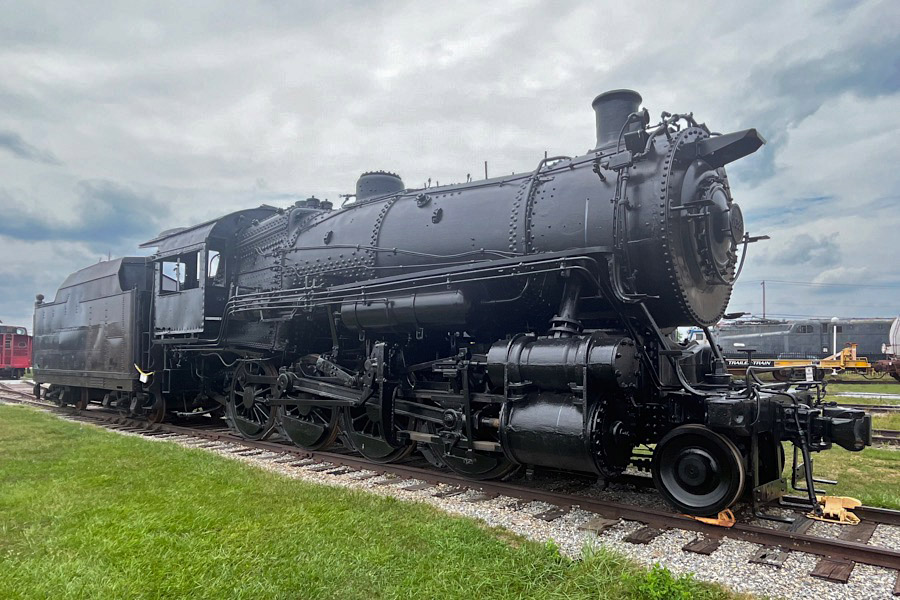
Strasburg, Pa / Jul 2024 / Gragg Robinson
 Replicas
Replicas

 UNCOMMON or UNUSUAL locomotives
UNCOMMON or UNUSUAL locomotives
"John Stevens"
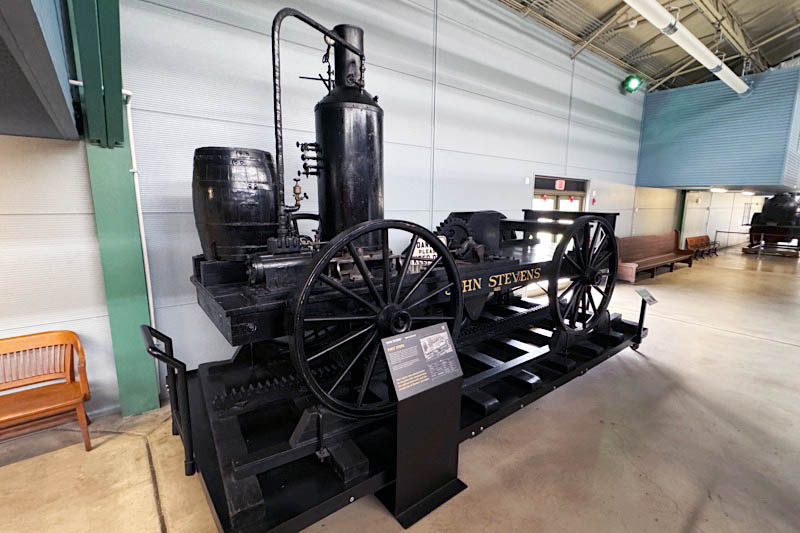
"John Stevens"
Strasburg, Pa / May 2024 / RWH


"John Stevens" replica

"John Bull"

"John Bull"
Strasburg, Pa / May 2024 / RWH


"John Bull" replica

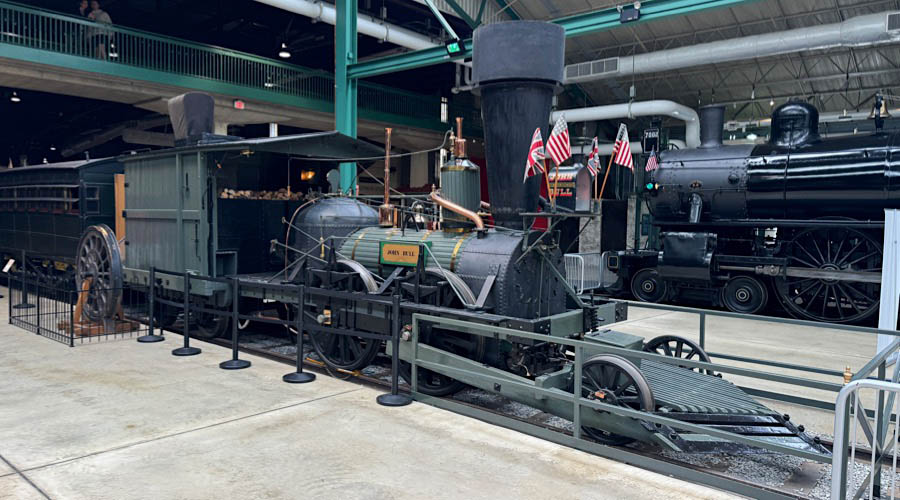
Strasburg, Pa / May 2024 / RWH

Built: 1940 (locomotive) 1927 (tender) by Pennsylvania Railroad, Altoona, Pennsylvania
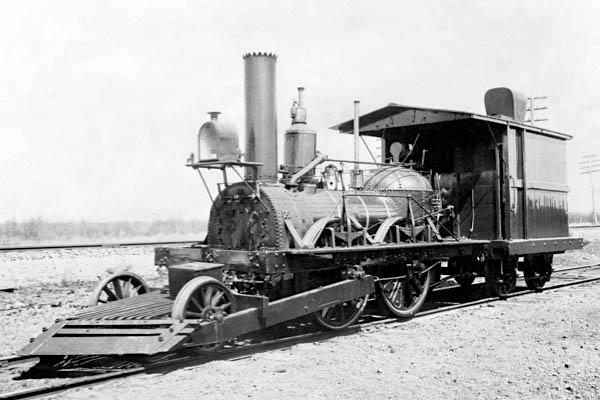
 he original John Bull was purchased by the Camden and Amboy Railroad from British locomotive builder Robert Stephenson and Company. Shipped to America in parts, and without any instructions, young engineer Isaac Dripps assembled the locomotive in ten days. Many modifications were soon made, including a tender, a headlight, and the first cowcatcher.
he original John Bull was purchased by the Camden and Amboy Railroad from British locomotive builder Robert Stephenson and Company. Shipped to America in parts, and without any instructions, young engineer Isaac Dripps assembled the locomotive in ten days. Many modifications were soon made, including a tender, a headlight, and the first cowcatcher.
When it absorbed the Camden & Amboy Railroad in 1871, the Pennsylvania Railroad acquired the original John Bull, restoring it for the Centennial Exposition in 1876. In 1884, the Pennsylvania Railroad donated the locomotive to the Smithsonian Institution, which allowed them to operate it at fairs and expositions for more than 50 years. For the 1940 New York World’s Fair, preservation concerns prevented the railroad from operating the original John Bull, so they built a working replica, which also ran at the 1948-1949 Chicago Railroad Fair.
The replica locomotive was used under steam for a 1946 Pennsylvania promotional film and at the 1948-49 Chicago Railroad Fair. Once in the collection of the Railroad Museum of Pennsylvania, the replica John Bull was restored and operated under its own power several times between 1983 and 1999.
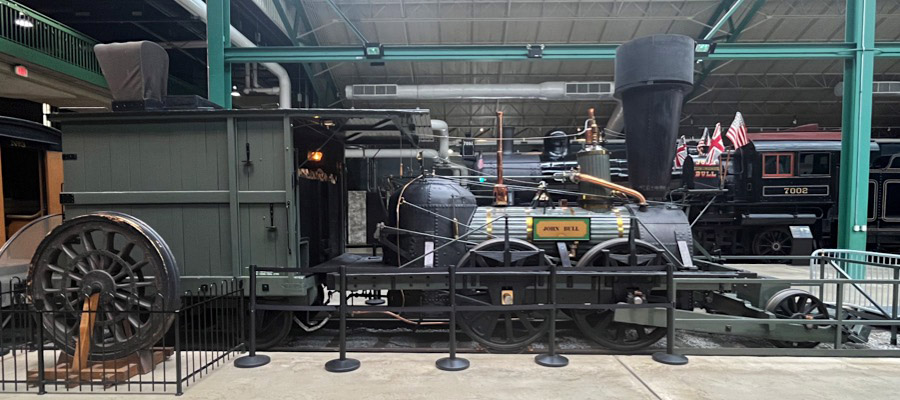
Strasburg, Pa / Jul 2024 / Gragg Robinson
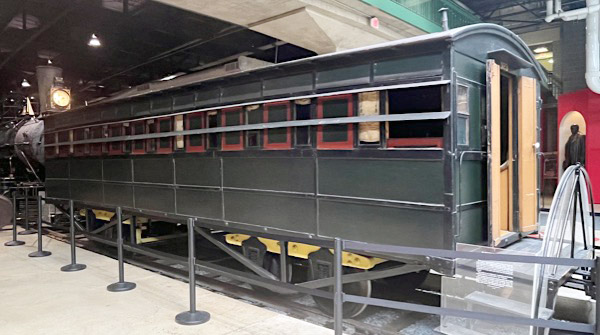
Strasburg, Pa / Jul 2024 / Gragg Robinson
Other Railroads

 UNCOMMON or UNUSUAL locomotive
UNCOMMON or UNUSUAL locomotive
Virginia & Truckee #20 "Tahoe"

Virginia & Truckee #20 "Tahoe"
Strasburg, Pa / May 2024 / RWH


Virginia & Truckee #20 "Tahoe"
to private owner, 1942
to Commonwealth of Pennsylvania
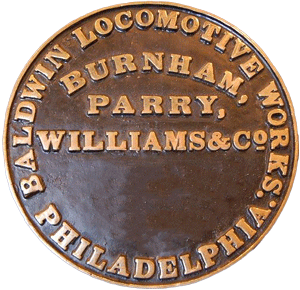
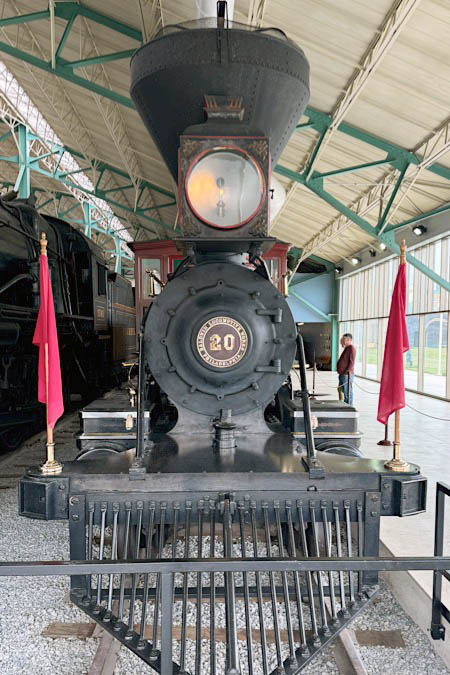
May 2024 / RWH
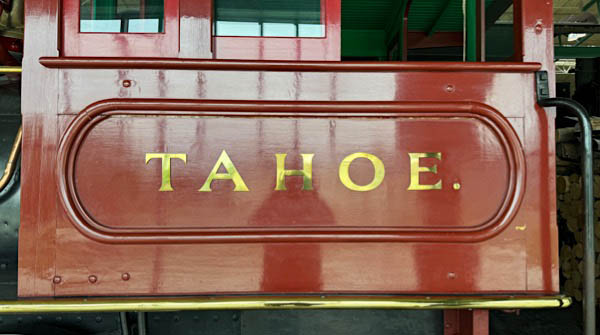
May 2024 / RWH
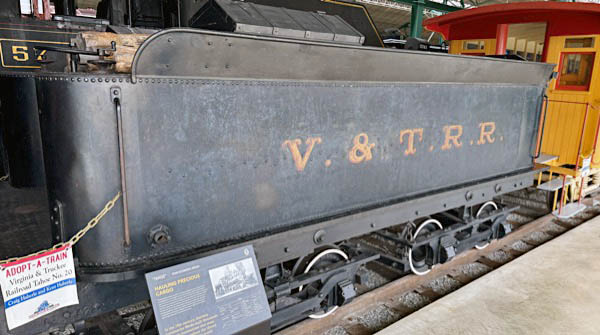
May 2024 / RWH
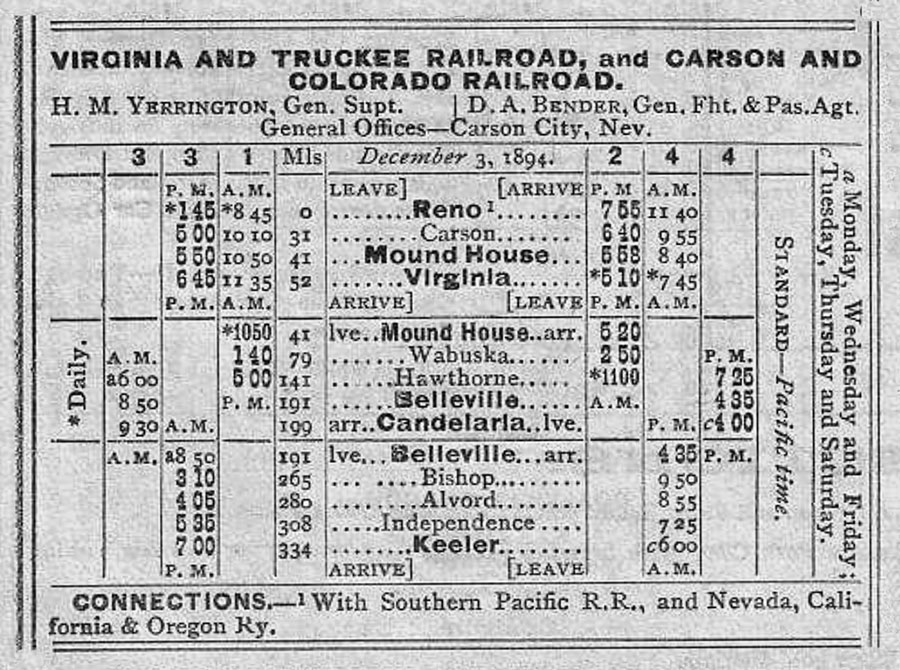
1895 Official Guide ad / collection

collection
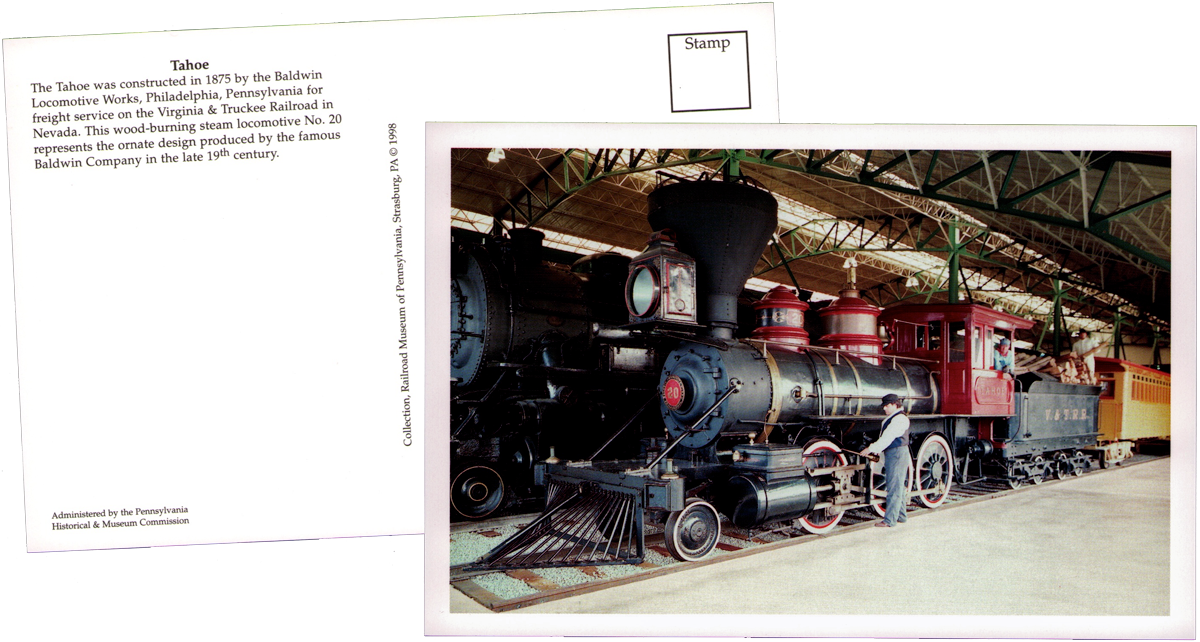
postcard / collection

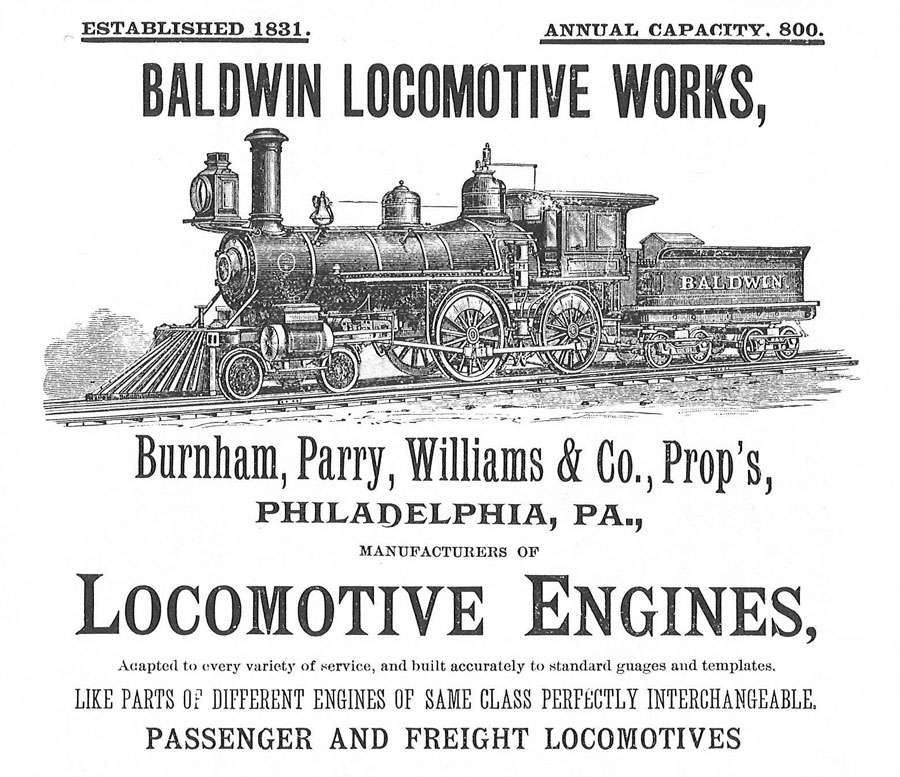
 he Baldwin Locomotive Works in Philadelphia led the world in locomotive production for half a century. With 1,445 employees in 1870, Baldwin was building hundreds of locomotives each year, including this one built for the Virginia and Truckee Railroad in Nevada, where it hauled silver ore and bullion from the mines of the Comstock Lode.
he Baldwin Locomotive Works in Philadelphia led the world in locomotive production for half a century. With 1,445 employees in 1870, Baldwin was building hundreds of locomotives each year, including this one built for the Virginia and Truckee Railroad in Nevada, where it hauled silver ore and bullion from the mines of the Comstock Lode.
The ornately decorated “Tahoe” once featured brass trim, finished woodwork, gold leaf, and a bonnet style smokestack (an original feature that was restored) as part of the original Baldwin paint scheme, typical of the “Mogul” 2-6-0 locomotives of the 1870s. During its lifetime, No. 20’s fuel supply changed from wood (1875) to coal (1907) to oil (1911).
In the 19th century, Baldwin Locomotive Works built thousands of steam locomotives that were operated throughout the United States and around the world.
Bethlehem Steel Company #111
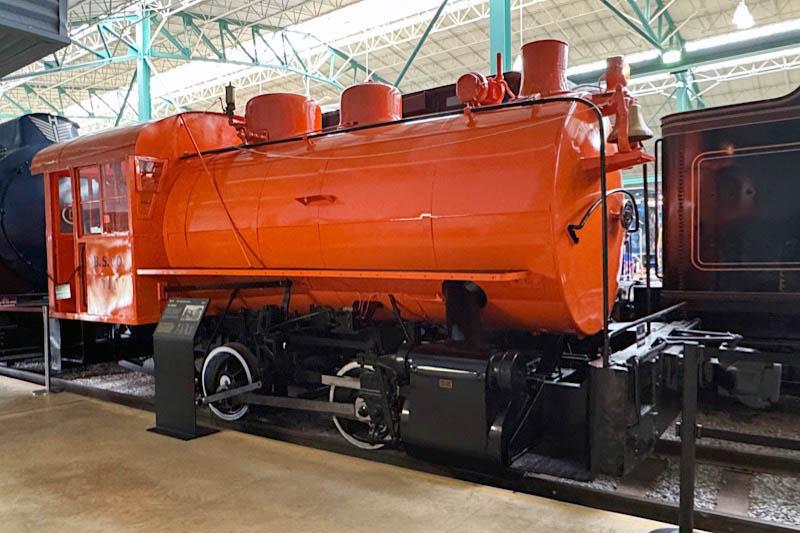
Bethlehem Steel Company #111
Strasburg, Pa / May 2024 / RWH


Bethlehem Steel Company #111
to Commonwealth of Pennsylvania
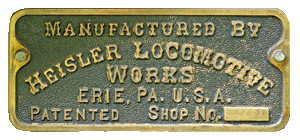
Leetonia Railway #1
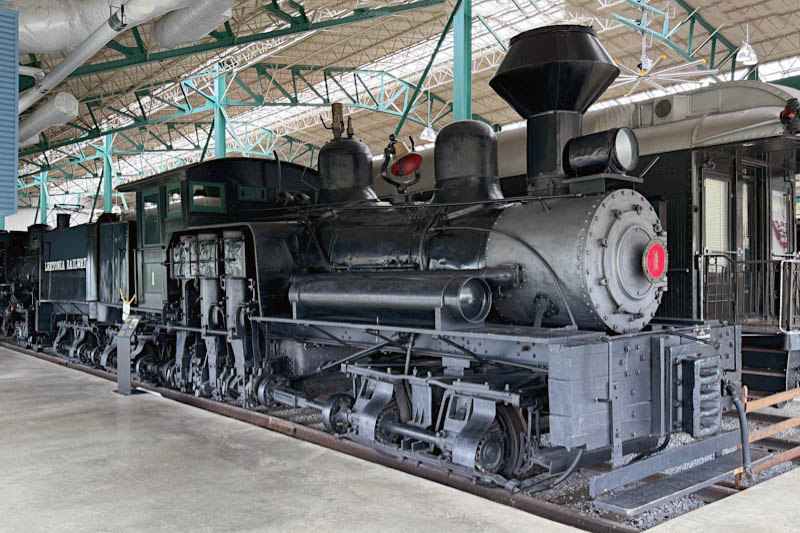
Leetonia Railway #1
Strasburg, Pa / May 2024 / RWH


Leetonia Railway #1
to Cherry River Boom & Lumber #16
to F C Cook Co #16
to Beech Mountain #16
to Ely-Thomas Lumber #2
to Commonwealth of Pennsylvania
painted as Leetonia Railway #1

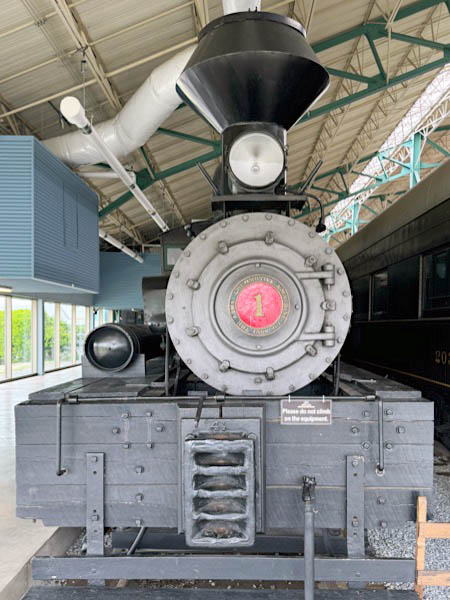
May 2024 / RWH
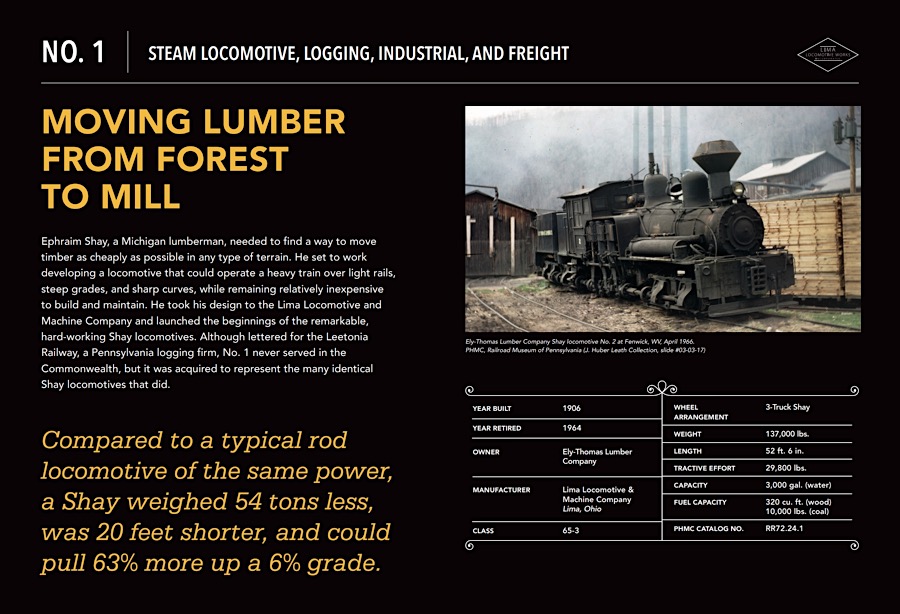
Railroad Museum of Pennsylvania
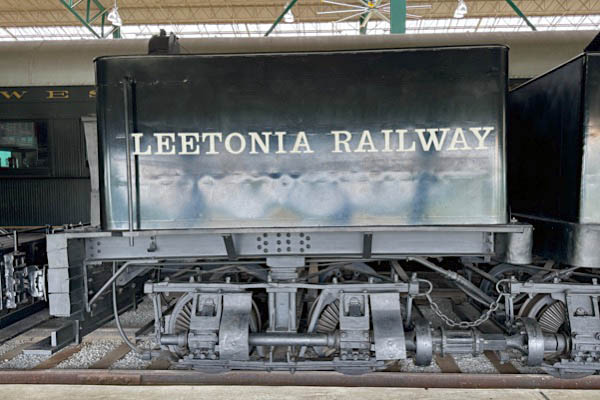
May 2024 / RWH
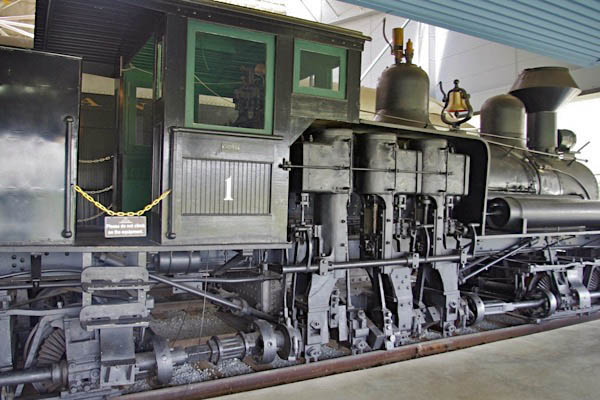
May 2024 / RWH
Moore Keppel & Company #4
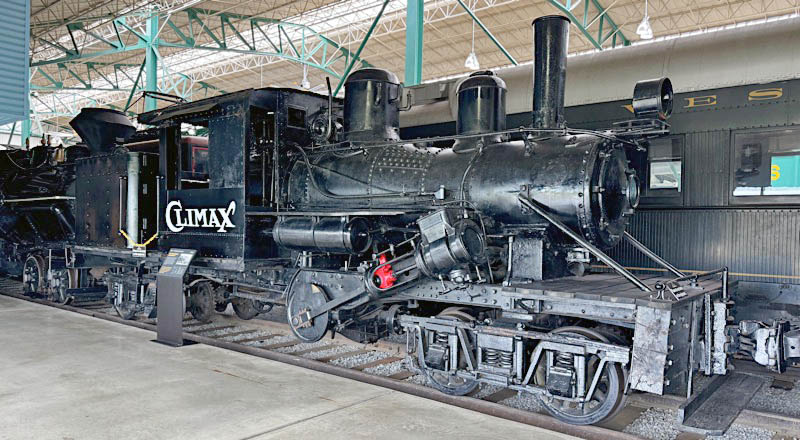
Moore Keppel & Company #4
Strasburg, Pa / May 2024 / RWH


Moore Keppel & Company #4
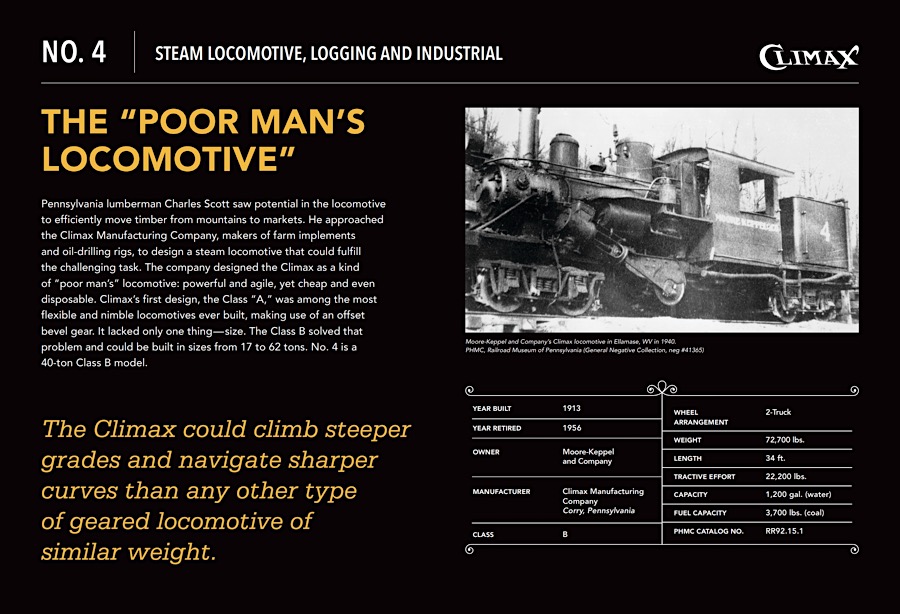
Railroad Museum of Pennsylvania
W.T. Smith Lumber #4
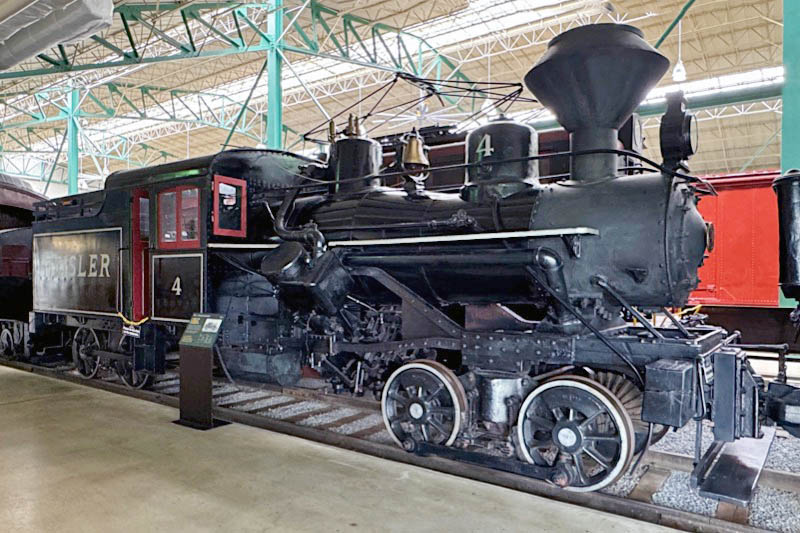
W.T. Smith Lumber #4
Strasburg, Pa / May 2024 / RWH


W.T. Smith Lumber #4
to Angelina Hardwood Lumber #6
to Chicago Mill & Lumber #5
to Commonwealth of Pennsylvania

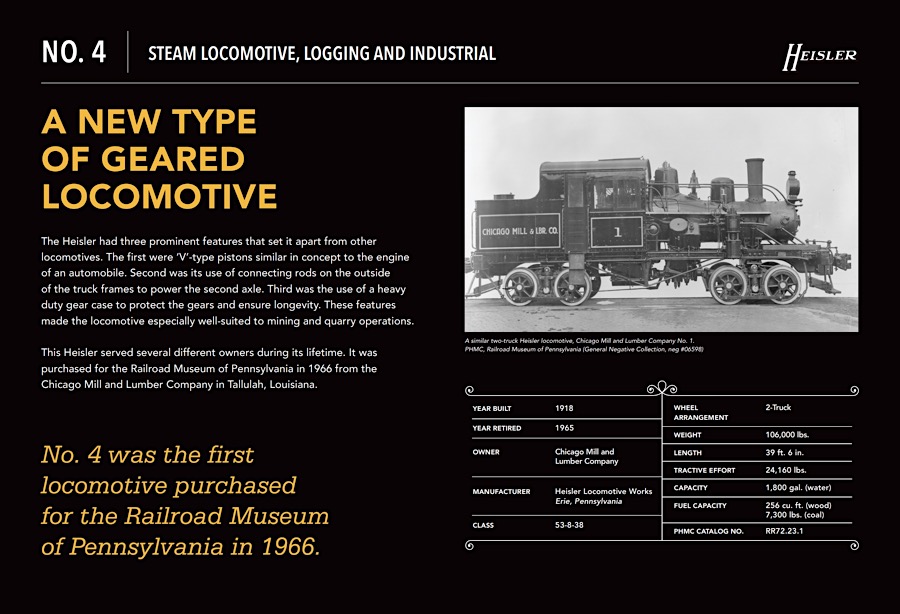
Railroad Museum of Pennsylvania
Philadelphia & Reading “Rocket”

Philadelphia & Reading “Rocket”
Strasburg, Pa / May 2024 / RWH


Philadelphia & Reading “Rocket”
to Reading Railroad Co
to Franklin Institute, Philadelphia
to Railroad Museum of Pennsylvania



 ompleted in March 1838, the Rocket was one of eight steam locomotives imported from England by the Philadelphia & Reading Railway from 1838-1841 from London-based Braithwaite, Milner & Company. The others included Firefly, Spitfire, Comet, Dragon, Helca, Planet, and Gem. Rocket was delivered by ship to Philadelphia in March 1838, and then hauled up the Schuylkill Canal to the foot of Penn Street in Reading, PA. From there, Rocket was pulled by a team of horses to the terminus of the Reading-to-Pottstown line at Seventh and Penn Streets, where it was placed into passenger service by July 1838. By the mid-1840s, Rocket was relegated to maintenance-of-way service, and it was also used to move and sort cars in Reading, PA, where it remained until the mid-1860s. During this time, Rocket was adapted to burn anthracite coal, between 1846-1848. Rocket was also converted into a saddle-tank locomotive with an enclosed cab by the early 1860s. Finally, it was transferred to the wharves at Port Richmond in Philadelphia, where it worked until retirement in March 1879, after covering more than 310,164 miles in its more than 40 years of service.
ompleted in March 1838, the Rocket was one of eight steam locomotives imported from England by the Philadelphia & Reading Railway from 1838-1841 from London-based Braithwaite, Milner & Company. The others included Firefly, Spitfire, Comet, Dragon, Helca, Planet, and Gem. Rocket was delivered by ship to Philadelphia in March 1838, and then hauled up the Schuylkill Canal to the foot of Penn Street in Reading, PA. From there, Rocket was pulled by a team of horses to the terminus of the Reading-to-Pottstown line at Seventh and Penn Streets, where it was placed into passenger service by July 1838. By the mid-1840s, Rocket was relegated to maintenance-of-way service, and it was also used to move and sort cars in Reading, PA, where it remained until the mid-1860s. During this time, Rocket was adapted to burn anthracite coal, between 1846-1848. Rocket was also converted into a saddle-tank locomotive with an enclosed cab by the early 1860s. Finally, it was transferred to the wharves at Port Richmond in Philadelphia, where it worked until retirement in March 1879, after covering more than 310,164 miles in its more than 40 years of service.
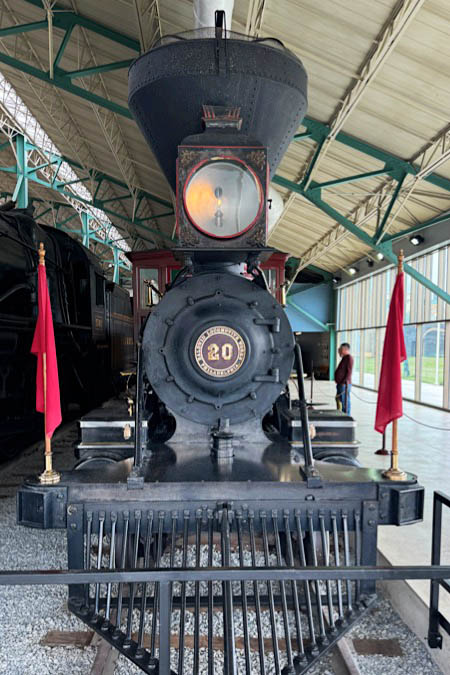

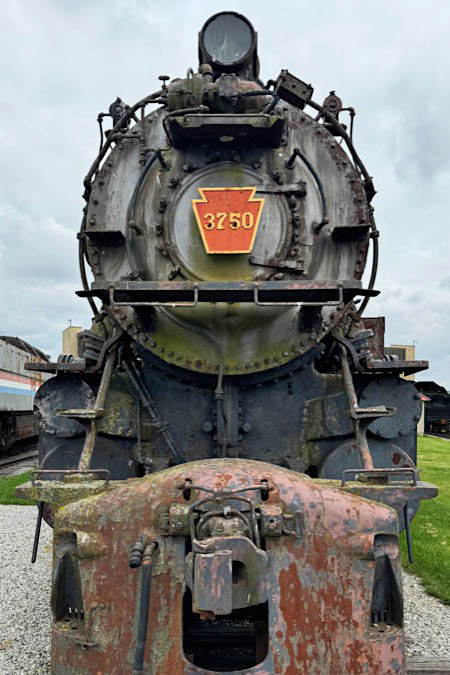
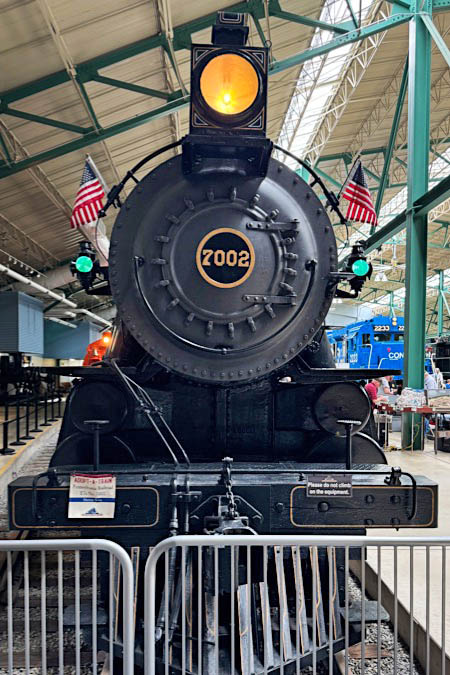

 Railroad Museum Steam locomotive roster
Railroad Museum Steam locomotive roster
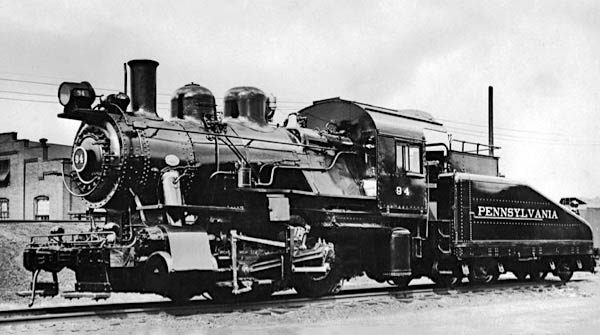

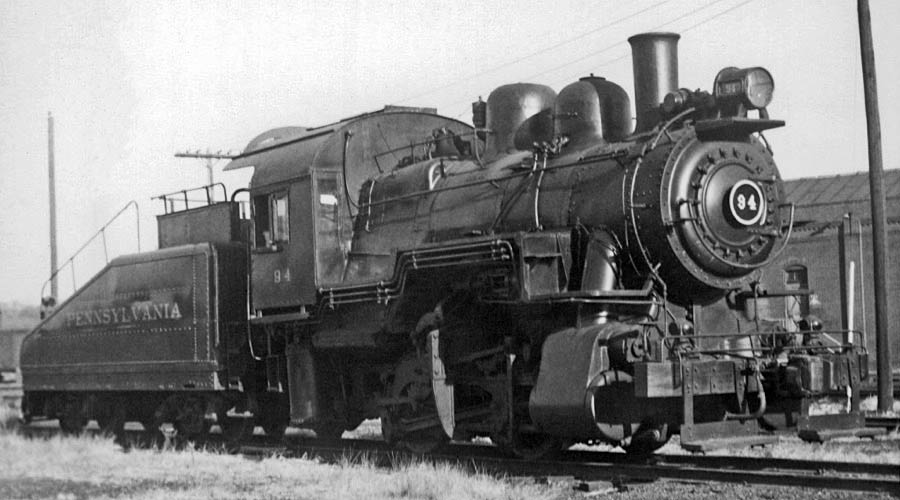

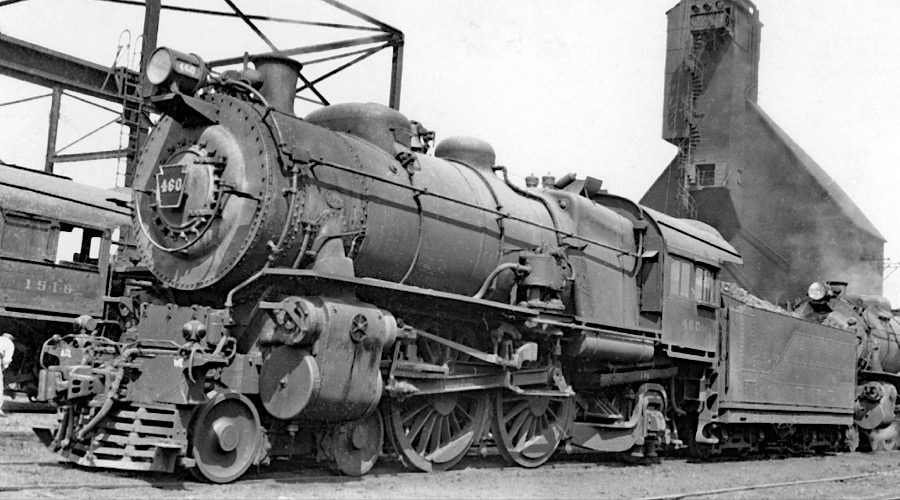
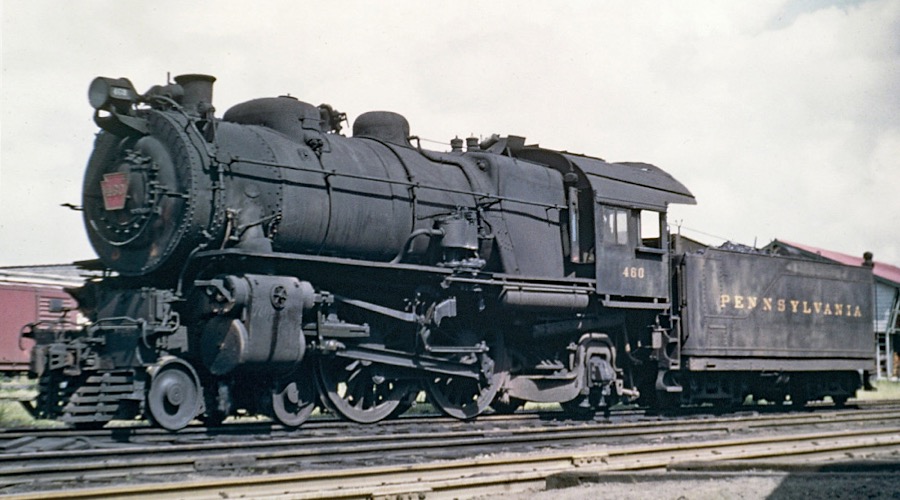
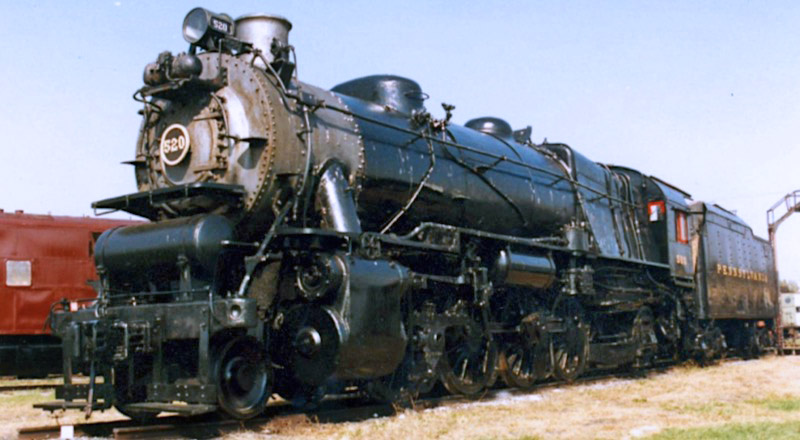
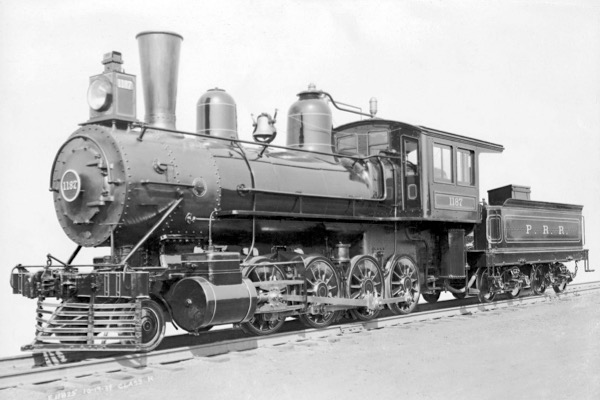


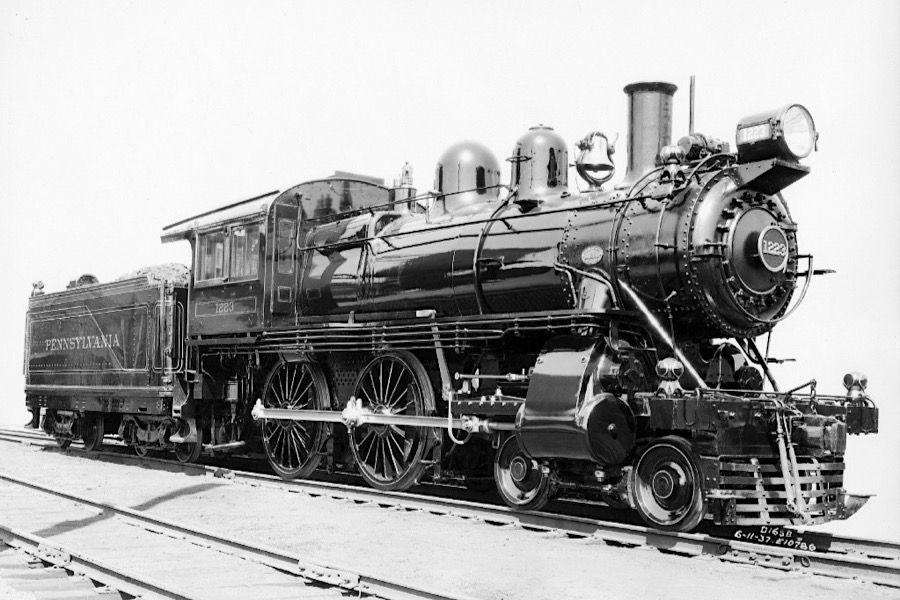



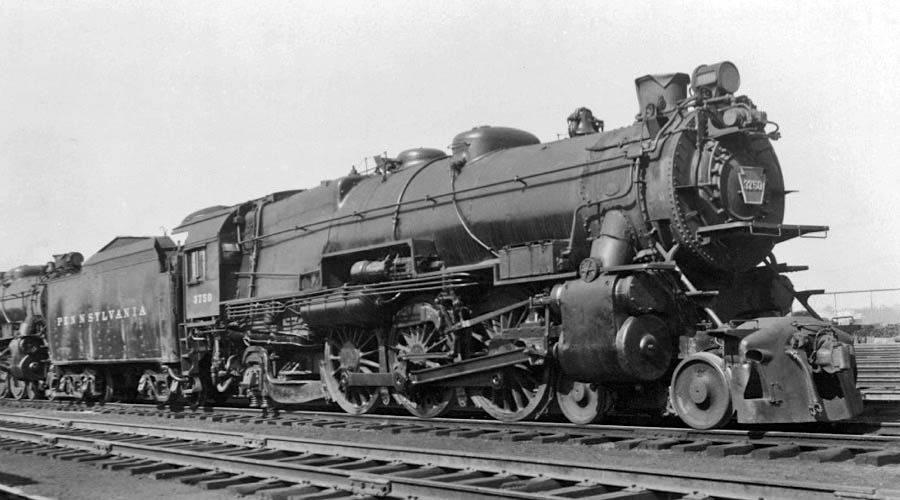
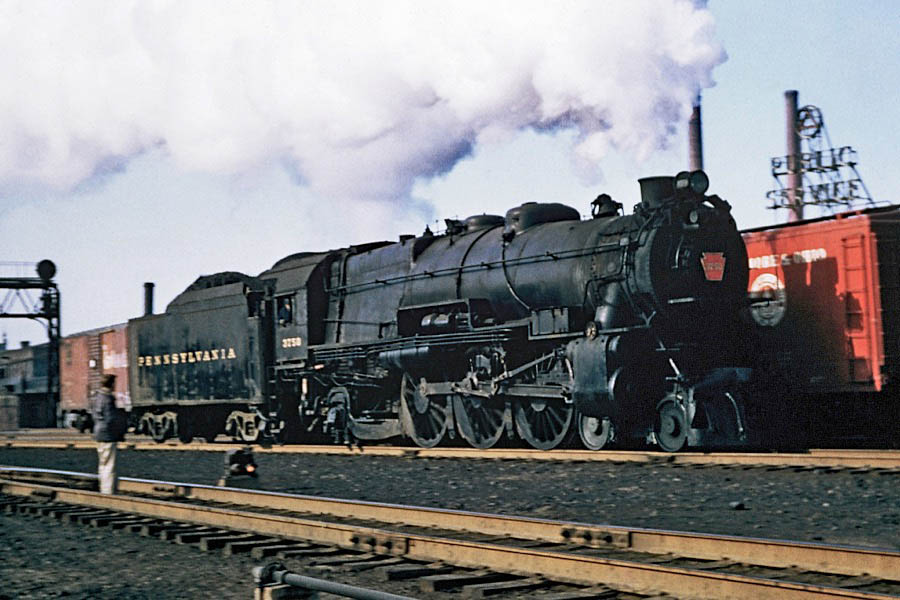



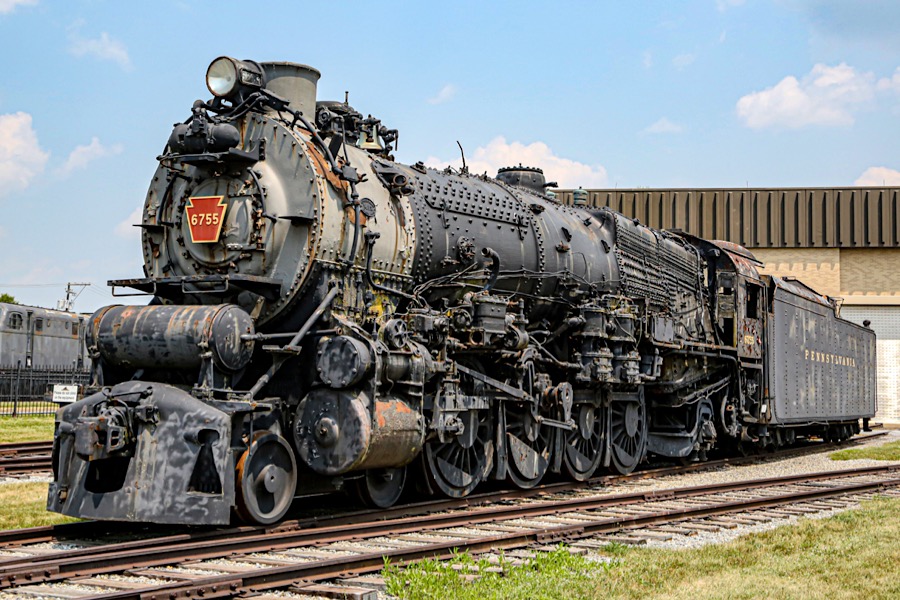

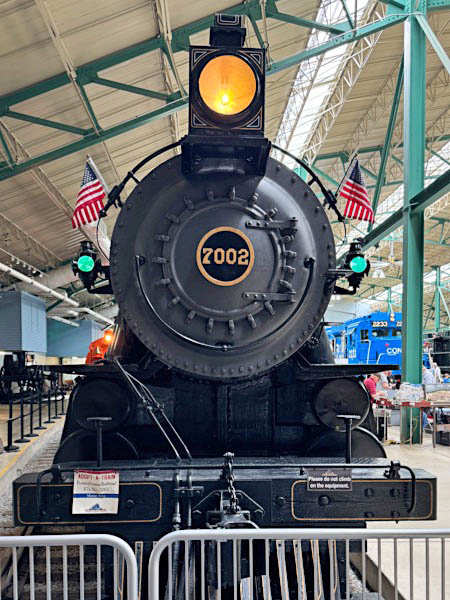

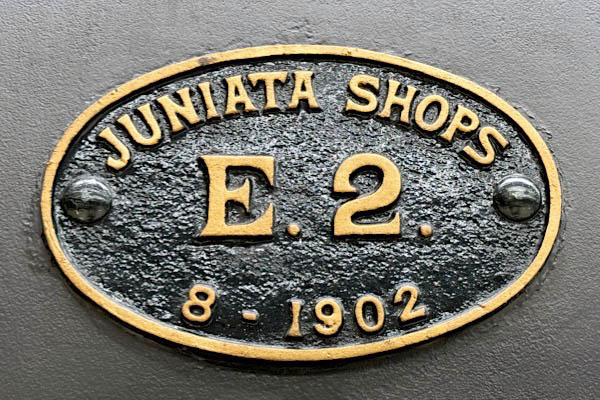

 No. 7002 was claimed to have achieved 127.1 miles per hour near Elida but this speed was based solely on two passing times recorded by separate observers at two different points (AY Tower and Elida) just 3 miles apart, and it is difficult to obtain even a general indication of a train's speed from signal box registers (Speed on the East Coast Main Line p 69, by P Semmens). The train arrived on time in Fort Wayne, Indiana. It was scrapped in 1935. No. 8063 was an E2a-class also built in 1902 by the Altoona Works. It was upgraded to the E7s-class in 1916, the engine was retired in 1939.
No. 7002 was claimed to have achieved 127.1 miles per hour near Elida but this speed was based solely on two passing times recorded by separate observers at two different points (AY Tower and Elida) just 3 miles apart, and it is difficult to obtain even a general indication of a train's speed from signal box registers (Speed on the East Coast Main Line p 69, by P Semmens). The train arrived on time in Fort Wayne, Indiana. It was scrapped in 1935. No. 8063 was an E2a-class also built in 1902 by the Altoona Works. It was upgraded to the E7s-class in 1916, the engine was retired in 1939.
